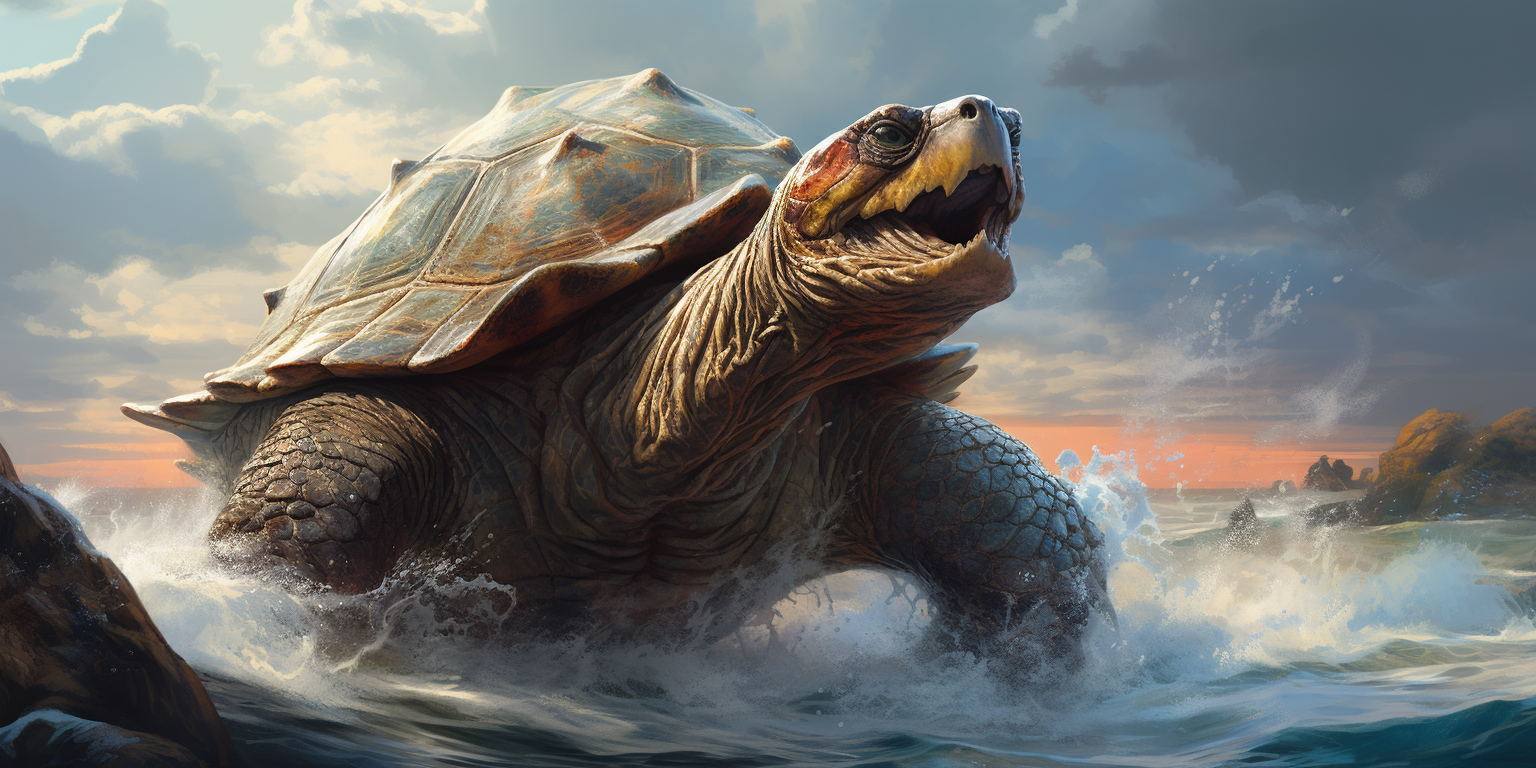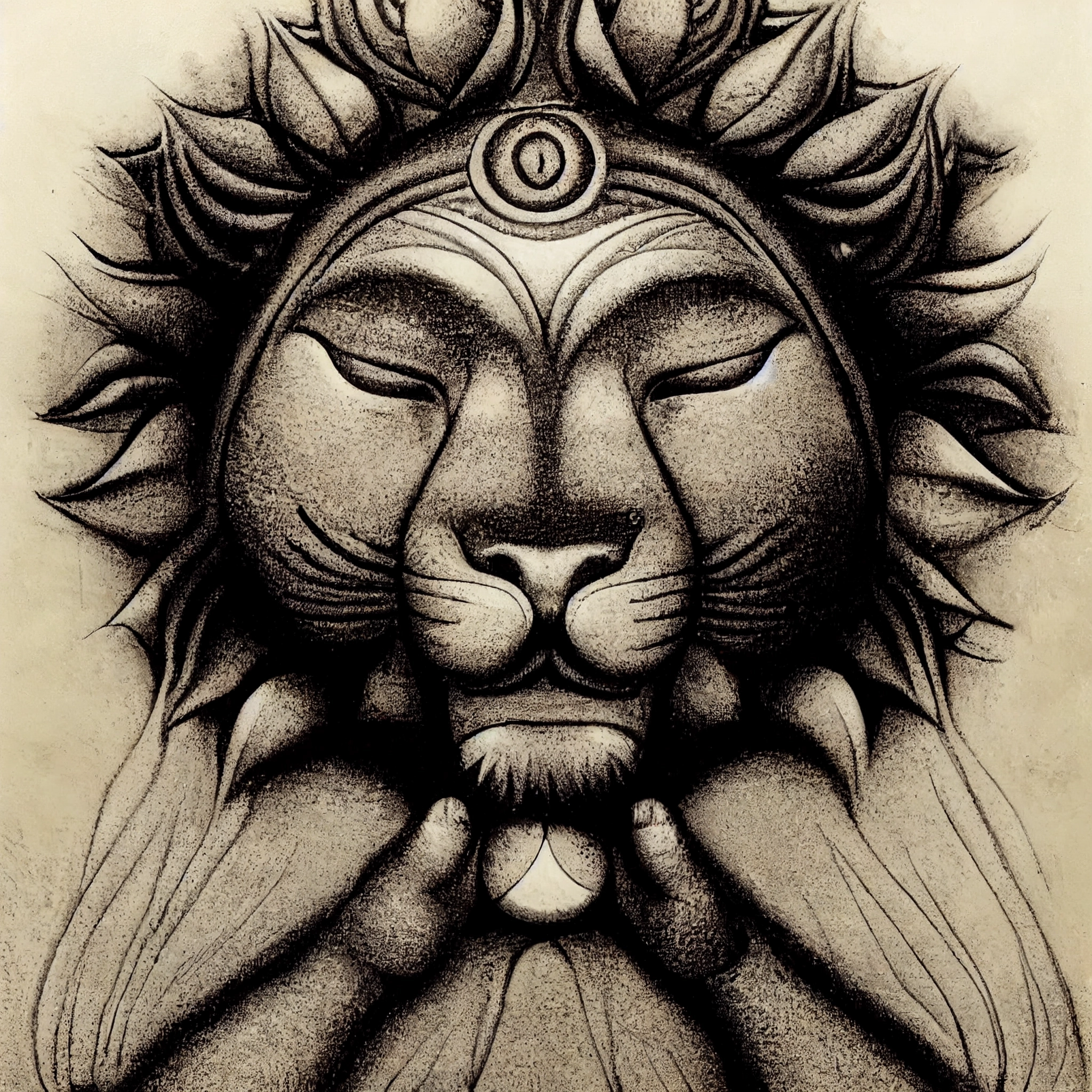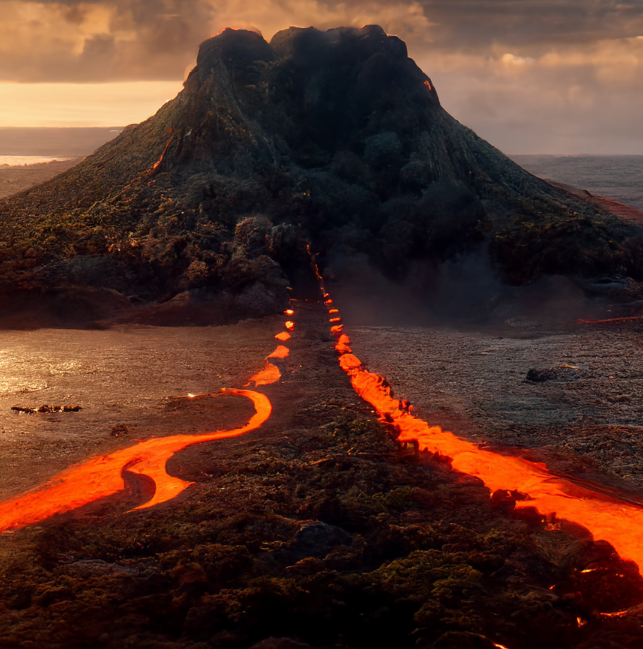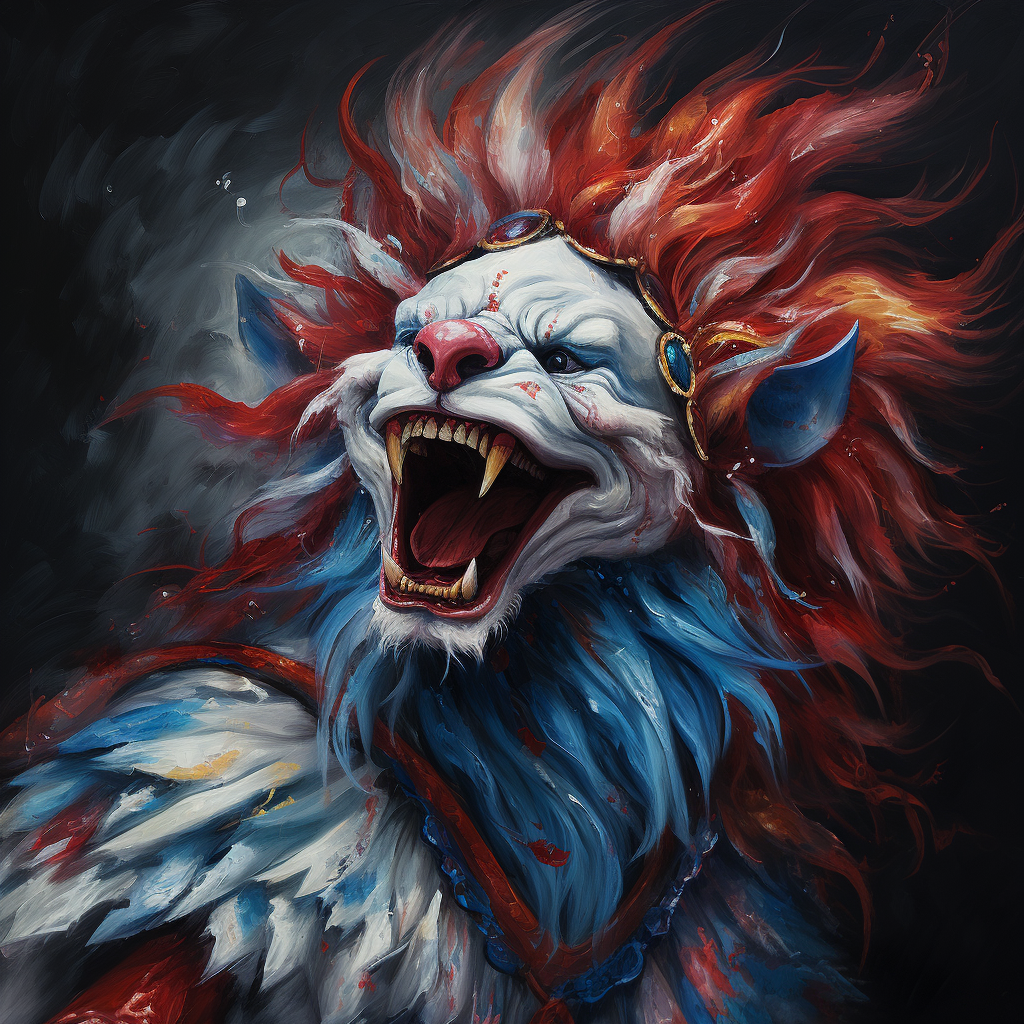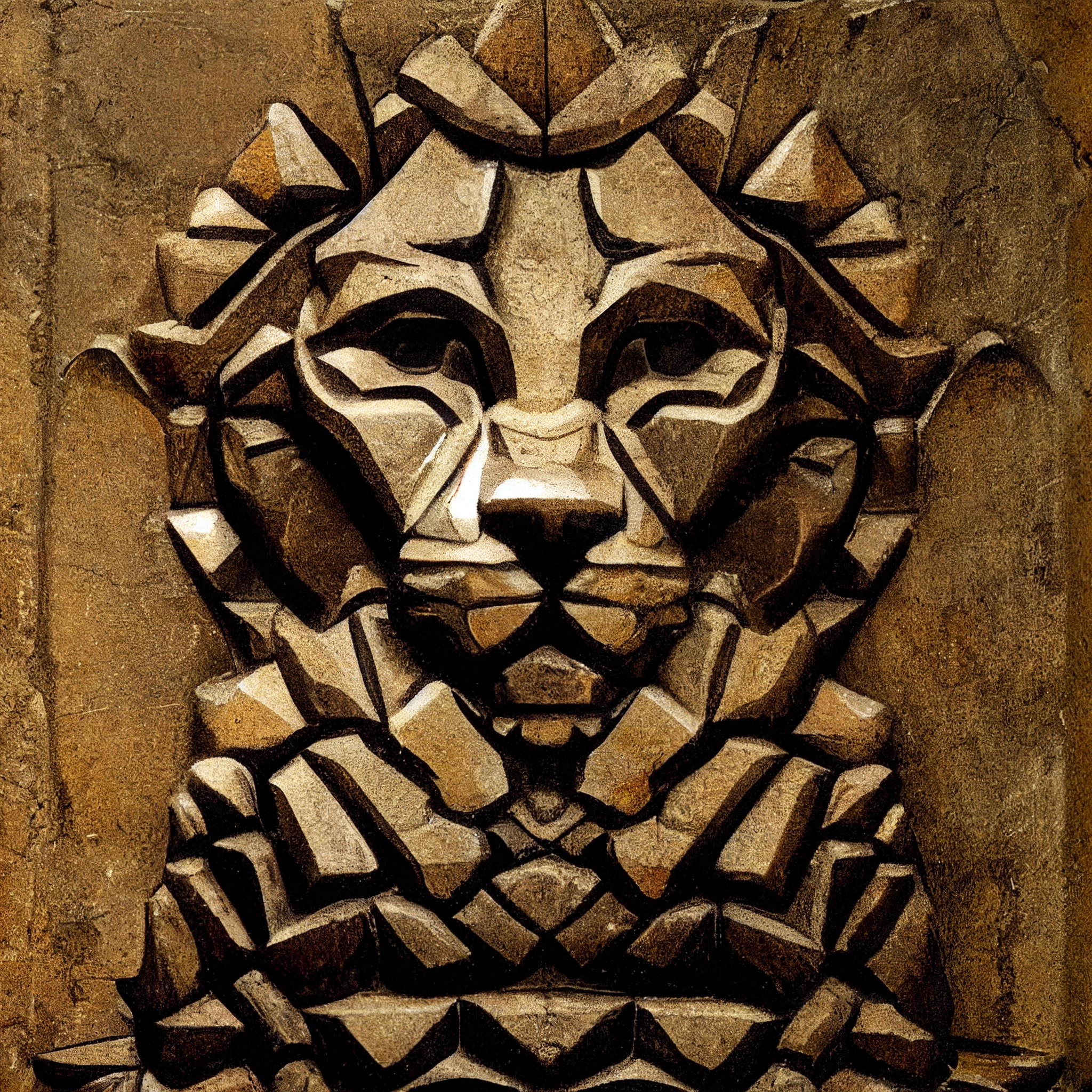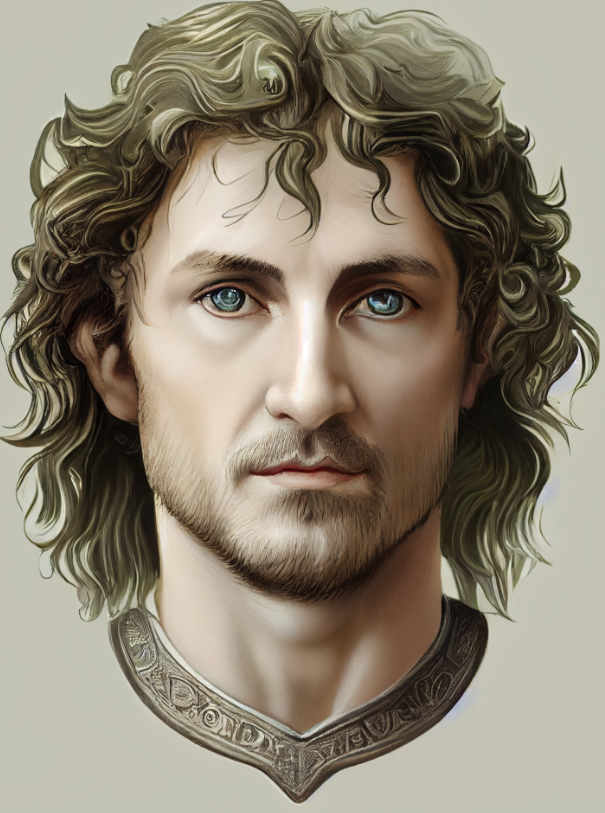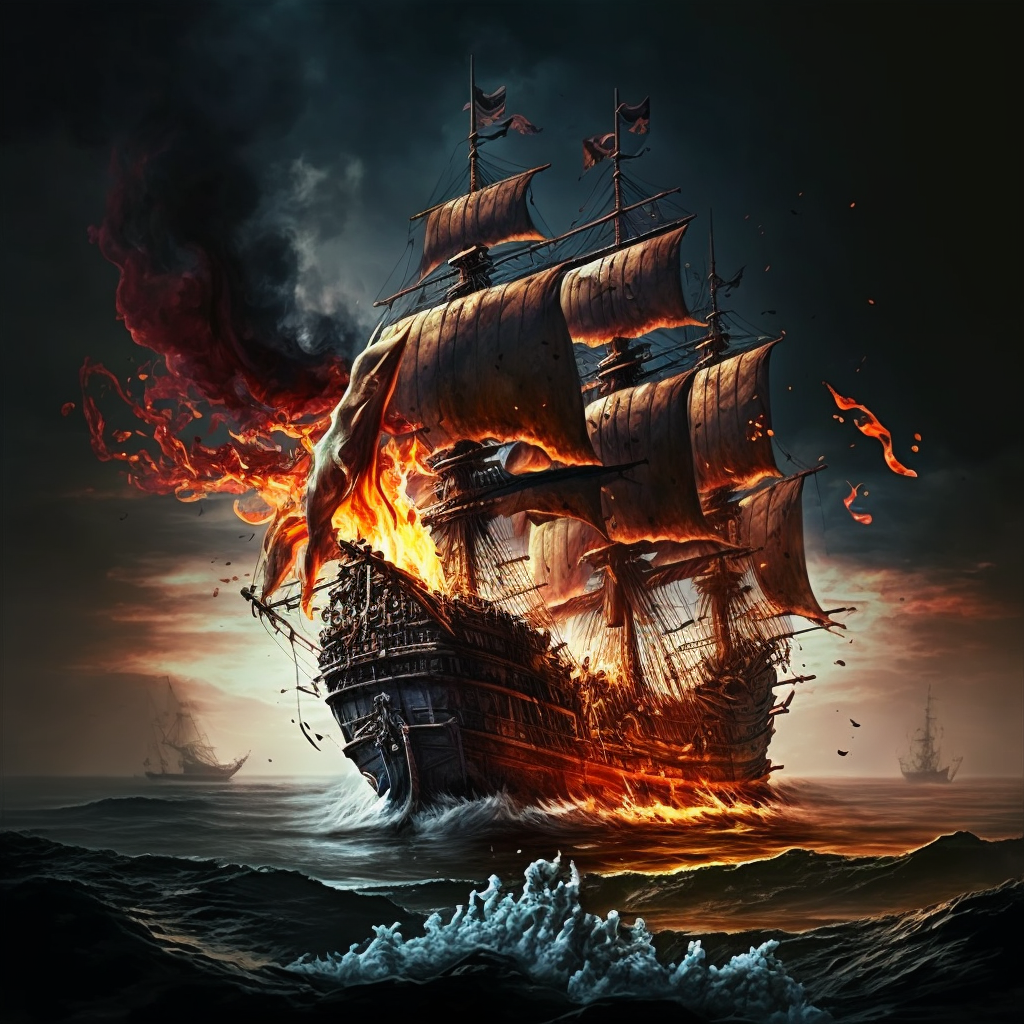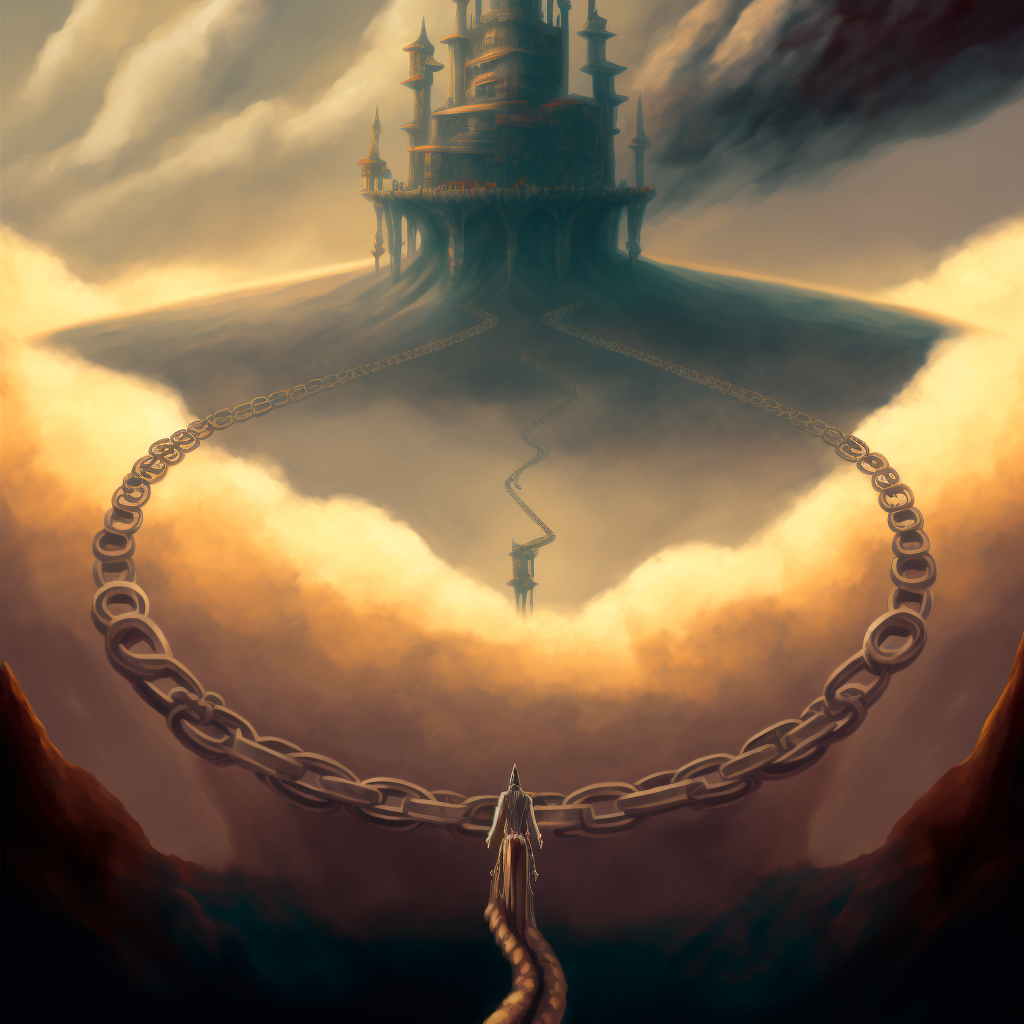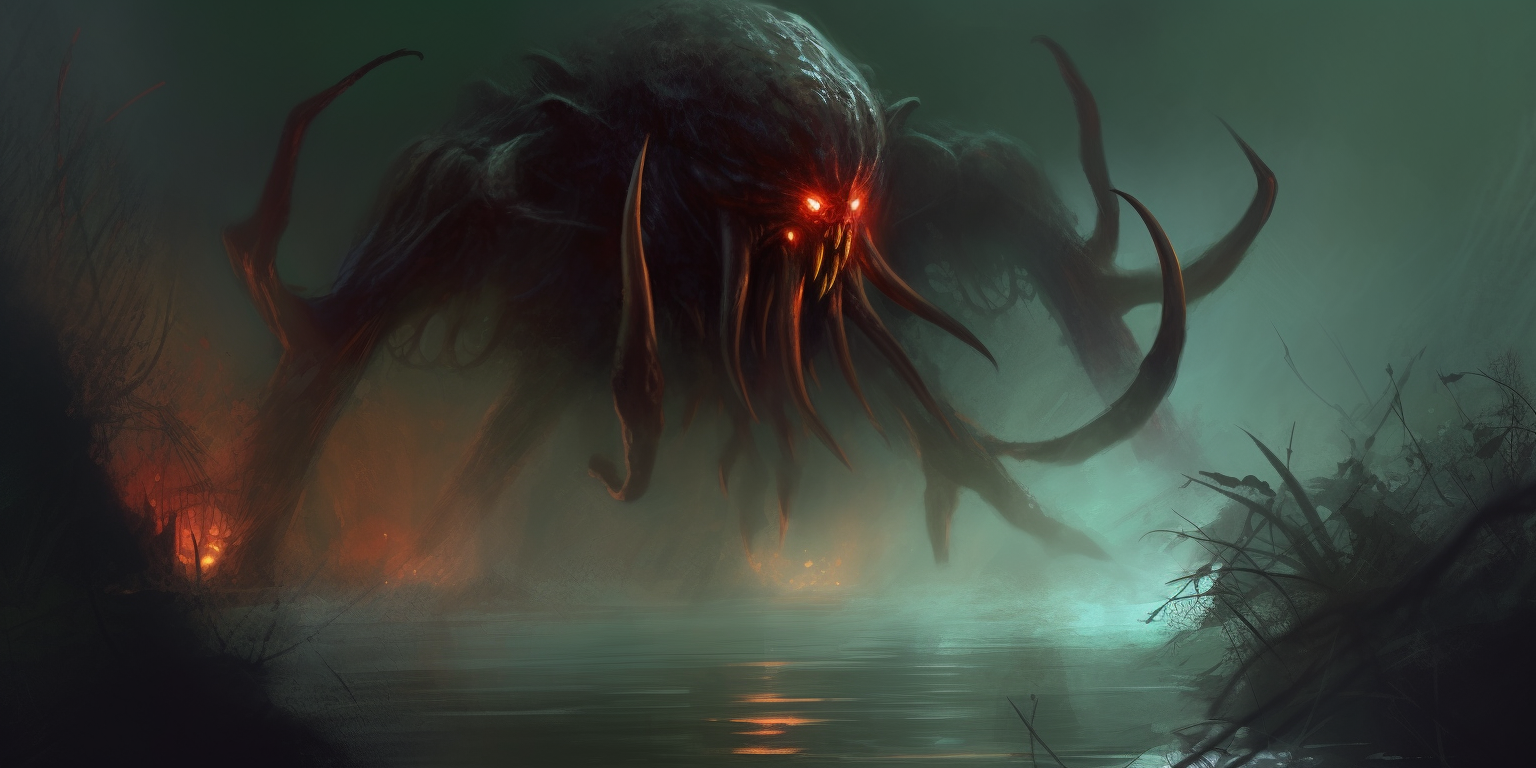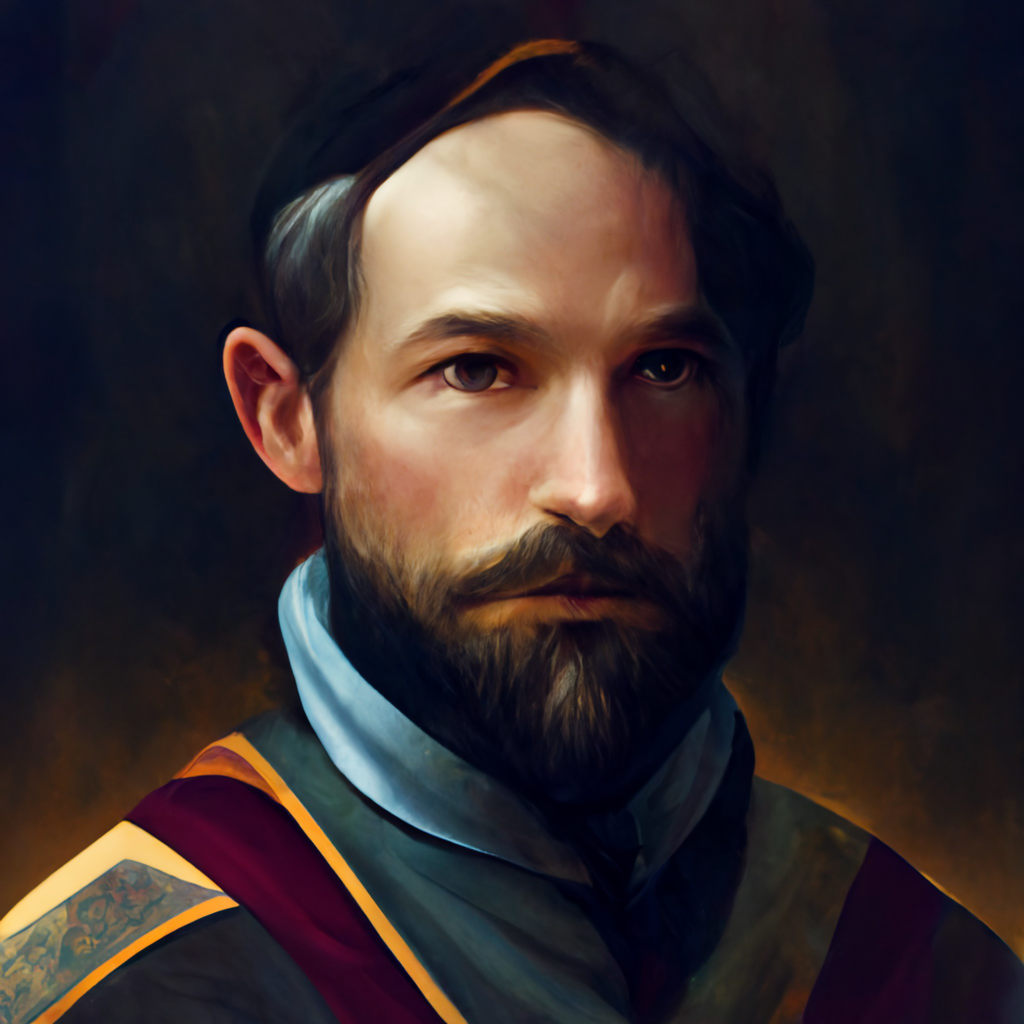The alleged date of Taopin leaving 2 human survivors (Andi and Hugur) after he eradicated the humans under Ornjack and Bailum's protection.

History of Laminarum
Dögun
... 0 DN
Dögun is the era of no written word. Little evidence remains of Laminarum from this time, aside from "sculptures" and natural landmarks. Also called the "Era of Interference" it is believed to be a time when gods roamed the world in mortal forms, sculpting the world as they traveled its flat plane. Different religions believe different versions of this sculpting, but most agree that Dögun was reserved for the gods. In the later years of the era, scholars believe elementals were created. Each being made of a singular, pure matter and unsullied by imperfections. These elementals carried out the will of the gods when they took their rest. Elemental Theory has become the most common prehistorical perspective, as the overwhelming evidence in the form of oceans, volcanoes, and skies make it irrefutable.
-
-100 Dn
The Grace of Taopin: start of human history
Celestial / Cosmic
Morgunn
1 299
This is the first era of written history, though it is not as well defined as the post Yunbad era. The defining terms of this era are different for each culture, however the most common trait is the confirmation of constructs and mortals existing across Laminarum at the same time. Important events of this history include the first formation of the three J'barri prides, the beginning of the Yunbad stone age, and the havoc of the Hailen Ryr. This era was one dominated by human activity and spread to different lands.
-
25 MN
39 MN
First human monument: The Bailum Observatory
Religious eventThe approximate date that the first ever human structure (and perhaps the first structure ever) was built.
-
40 MN
Humans begin expansion to other islands
Discovery, ExplorationThe approximate date when humans began expanding throughout the entirety of the Snow Rock Isles.
Location
Snow Rock IslesSpecies
Humans -
48 MN
Humanity invents the fishing net
Scientific achievementThe approximate date when humanity began using net technology, as well as the possible origin behind the Ornjack myth.
Location
Snow Rock IslesSpecies
Humans -
67 MN
Warren the Chummer organizes his Haseti
FoundingThe approximate date on which Warren the Chummer gathered friends and family to declare their rulership over the Snow Rock Isles with the help of a great and terrible ship.
Location
Snow Rock IslesSpecies
Humans -
 94 MN
94 MN
Warren's voyage against The Prisonkeep
Life, DeathLocation
Snow Rock IslesSpecies
Humans -
95 MN
100 MN
Snow Rock Civil War
Military: WarThe war resulting from Warren II and Abbot I both staking claim over the Snow Rock Isles following the Chummer's murder.
Location
Snow Rock IslesSpecies
Humans -
108 MN
111 MN
The Steward's War
Military: WarThe war declared by Warren III after claiming the title of baron and contesting the rule of Abbot I.
Location
Snow Rock IslesSpecies
Humans -
153 MN
Aeber
Death of Warren the Steward
Life, Death -
153 MN
Orphember
The Haseti vote of Succession
Gathering / ConferenceLocation
Snow Rock IslesSpecies
Humans -
158 MN
The Whitefinger Declaration of Moral Charter
Civil actionThe declaration of Narfi Whitefinger's new "Moral Charter," which would go on to dictate law, punishment, and the status quo of humans for decades to come. While odd in many ways, it established several customs in the modern era, such as marriage.
Location
Snow Rock Isles -
161 MN
185 MN
The Morgunn Explosion: human pantheon expands
Cultural eventThe massive expansion of the human pantheon, which had been monotheistic for all intents and purposes.
Location
Snow Rock IslesSpecies
Humans -
162 MN
Chaiber
Logratte-Helgaard Alliance
MarriageThe marriage between Anise Helgaard and Kanel Logratte. This marriage was used to unite their respective families, supporters, and resources.
Location
Snow Rock IslesSpecies
Humans -
180 MN
The Founding of Ghei Wyl
Founding -
184 MN
The Fish Egg Flu ravages Haseti
Disaster / DestructionLocation
Snow Rock IslesSpecies
Humans -
185 MN
Death of Narfi Whitefinger, Formation of the Islands Five
Political eventThe death of Narfi Whitefinger via sacrifice and the subsequent surrender of his people to the Logratte-Helgaard alliance.
-
187 MN
Desecration of Jurejun
Cultural eventThe declaration of Jurejun as a desecrated land by Kanel Logratte and the subsequent law sending criminals there to serve their sentences.
Location
Snow Rock IslesSpecies
Humans -
205 MN
5 Taober216 MN
23 Naiber
The Saltkrigere/Strand-Blood War
Military: WarThe brutal war waged between the Snow Rocks, Strand-Bloods, and natives of the newly discovered Drulluvatn (known natively as Mot D'nir). This war would go on for over a decade and would be the onset of humanity gaining a foothold in the "new world." For a more detailed look at the war, view the conflict's timeline:
-
206 MN
12 Silber206 MN
11 Naiber
The Strand-Blood Voyage
ExpeditionLocation
Snow Rock IslesSpecies
Humans -
206 MN
12 Naiber206 MN
3 Aeber
The Strand-Bloods Settle Drulluvatn
FoundingThe Strand-Blood Cult's settlement of Drulluvatn (modern-day Mot D'nir). They were unaware of the existence of other sentient races in the region, such as the Naga-Tel and Tara-Jhen.
-
206 MN
5 Aeber206 MN
17 Aeber
First Strand-Blood Expedition into the Marshes
ExpeditionAbbot II's first exploration into the dense marshes outside of Drulluvatn's shores. Most of the 15 individuals accompanying her would die before returning to the shores.
-
206 MN
25 Aeber
The Strand-Bloods meet the Tara-Jhen
Cultural eventSpecies
Humans -
206 MN
26 Aeber206 MN
2 Huerember
Tara-Jhen teach Strand-Bloods about Drulluvatn
Cultural eventThe period in which Strand-Bloods learn how to survive Drulluvatn (called Mot D'nir by the locals) from the Tara-Jhen, as well as cultural exchange between the groups.
-
206 MN
30 Aeber
The Storms of the Orphi Gap Settle
Geological / environmental eventThe settling of the storms between the Snow Rock Isles and the mainland continents, believed to have been caused by Bailum fighting Ithitar from beyond Ornjack's web.
Location
Orphi Gap -
206 MN
7 Huerember
Humans meet the Naga-Tel
Cultural eventSpecies
Humans -
206 MN
2 Ailber207 MN
5 Feimber
The Snow-Rocks settle Shellbay/ the Kaban Slaughter
FoundingThe settlement of the Saltkrigere warriors at Shellbay and the subsequent slaughter of the native Kaban tortoise-folk.
-
206 MN
25 Ailber207 MN
11 Taober
Abbot II grows ties with the Naga-Tel
Diplomatic actionHaving their home and family taken from them, the Strand-Bloods began working up political alliances with the largest of the Naga-Tel tribes, even going as far as to share Jurejun tree spores for growth.
-
207 MN
10 Feimber
The Awakening of Korahaman
Religious eventThe awakening of the Kaban ocean deity, "Korahaman," in response to its people's slaughter by the Saltkrigere.
-
207 MN
13 Taober207 MN
2 Orphember
Snow-Rock Settlers Arrive at Shellbay, Construction
Population Migration / TravelThe arrival of several Snow-Rock ships filled with women, children, servants, and other laypersons.
-
207 MN
12 Mitember
Haas Thinil Gains Divine Revelation from Chal Churdour
Religious eventThe vision granted to Haas Thinil from Chal Churdour, which would subsequently lead to recognition of the being by the Naga-Tel.
Location
Ravahinas VillageSpecies
Naga-Tel -
207 MN
12 Mitember210 MN
Naiber
The Growth of the Ravahinas Gardens
Geological / environmental eventThe expansion of Haas Thinil's garden of Chal Churdour's trees after the revelation he provided.
Location
Ravahinas VillageSpecies
Naga-Tel -
207 MN
16 Mitember
Kanel Logratte returns to the Snow Rock Isles
Life, RelocationLocation
Snow Rock IslesSpecies
Humans -
208 MN
4 Taober215 MN
16 Silber
Hamish sends Saltkrigere on Territory Expeditions
ExpeditionThe beginning of the Saltkrigere expeditions to find substantially habitable territory, more incredible fauna (such as the Kaban), and most importantly to find the Strand-Bloods.
Species
Humans -
208 MN
2 Mitember208 MN
6 Chaiber
The Shellbay Longhouse Construction
Construction beginning/endThe construction of the Shellbay longhouse from the shell of the deceased Korahaman.
-
212 MN
2 Naiber212 MN
5 Chaiber
The Saltkrigere Meet the Tara-Jhen, imprisonment
Discovery, ExplorationThe first meeting between the Saltkrigere ground troops and the Tara-Jhen, which would soon become an alliance.
-
212 MN
9 Huerember
The Saltkrigere meet Kaban Nomads
Discovery, ExplorationThe first sightings of the Kaban by the Saltkrigere pioneers after their initial conflict.
-
215 MN
4 Naiber215 MN
7 Chaiber
Gidofem Ettaji plans truce with the Naga-Tel
Diplomatic actionLocation
Thiff -
215 MN
15 Aeber215 MN
30 Aeber
The Trees of Chal Churdour Attack the Quai
Disaster / DestructionThe short lived spiritual disaster amongst the Tara-Jhen of Thiff, brought on by their Naga-Tel guests.
-
215 MN
1 Orphember220 MN
12 Orphember
Destruction of the Jurejun trees in Thiff (regrowth of the Quai)
Geological / environmental eventThe period in which the Tara-Jhen destroyed the roots that had spread at Bito Ri and beyond, which was eventually passed on to be performed by Kaban slaves.
-
216 MN
22 Naiber
Elimination of the Strand-Bloods, Ravahinasi, peace between humans and Tara-Jhen
Life, DeathThe execution of the remaining Strand-Bloods and Haas Thinill. Also the beginning of political ties between the people of Thiff and Shellbay.
-
216 MN
23 Naiber219 MN
20 Aeber
The Time of Rest
DisbandmentThe period in which the Tara-Jhen and humans began to wind down after a long period of war and tensions, marked by its vast constructions, explorations, and repositioning of the human military.
-
217 MN
19 Taober217 MN
23 Orphember
Founding of Rodaka
FoundingThe creating of a small Kaban outpost, intended to stop the hardships for the Kaban. They were assisted by the Thanid race, themselves disgraced in the hardships of Mot D'nir.
Location
New Vhan HnidasSpecies
Kaban -
217 MN
20 Ailber
Quai grows within New Vhan Hnidas, Rodaka
Military actionThe beginning of the Quai's growth within the territory of the exiled Thanid people and their new neighboring village, Rodaka.
Location
New Vhan HnidasSpecies
Thanids -
218 MN
4 Feimber
Forces of Thiff attack New Vhan Hnidas, Quai changes allegiances
Religious eventThe swift attack against the Thanids by the Tara-Jhen, followed by the Quai changing its allegiance to the Kaban.
Location
New Vhan HnidasSpecies
Thanids -
218 MN
28 Taober218 MN
2 Naiber
The Tara-Jhen locate the Kaban, enslavement of the Kaban.
Religious eventThe discovery of the Kaban by the Thanid spies, followed by their elimination and enslavement by the Tara-Jhen.
Species
Kaban -
219 MN
18 Mitember
The Quai Returns to the Tara-Jhen
Religious eventThe return of the Quai to the Tara-Jhen, after which the Kaban slaves were immediately put to work on digging the trees of Chal Churdour in Bito Ri.
-
1058 B.E. - 1056 B.E.
Founding of Kala
Founding -
1058 B.E. - 1056 B.E.
Founding of Roja
Founding -
 230 MN
230 MN
The Exodus of Ghei Wyl
Disaster / Destruction -
231 MN
Founding of Poueir
Founding -
232 MN
10 Mitember
The disappearance of Gidofem Ettaji
Life, DeathThe disappearance and presumed death of Ettaji, Gidofem of Bito Ri, as well as the crew that followed him.
Location
Realm of the QuaiSpecies
Tara-Jhen -
235 MN
Founding of Mailes
Founding -
242 MN
4 Orphember
Death of Kanel Logratte
Life, DeathThe death of Kanel Logratte as a result of old age and falling ill. His death was swift and peaceful. His rule would be followed by his wife, Anise Helgaard, who would die ten years later.
-
282 MN
30 Taober
Death of Hamish Troutlung
Life, DeathThe death of Hamish Troutlung, also called Hamish "the Negotiator," at the bitter age of 96. His death would result in an explosion for human expansion. Ironically, he died at the same age as Kanel Logratte, his greatest political opponent.
-
298 MN
1 Feimber299 MN
1 Feimber
The Yunbad Cold Year
Disaster / DestructionA year of famine and tragedy brought upon the Yunbad, pushing them towards drastic survival actions.
-
299 MN
1 Huerember299 MN
24 Ailber
The Yunbad Pilgrimage to Hawumad
Religious eventHawumad was always on the edge of the Yunbad world, but unreachable. A singular priest of the god Denpa, named "Heime," was the only individual able to hear the blessings that the god sent to save them from their damnation. Denpa told Heime that the Yunbad had to travel to Hawumad to save their people. Supposedly, he would form a bridge to the distant plateau for safe passage. Many had believed that Hawumad was the seat of Denpa, and this message reinforced it. The bridge miraculously formed and a dispatch traveled down the mountains, over the dangerous delta, and to Hawumad. The specifics of what was found are poorly recorded, but this is well known to be the first time a mortal wielded magic. This would change the course of history, not only for the Yunbad but for the world. This magic helped them with food shortages and is regarded as the end of the Dagur era.
-
 299 MN
299 MN
Ailber300 MN
Feimber
Razing of Mailes
Disaster / Destruction
Dagur
300 432
Dagur is an era defined by conflict and the eruption of mortally-wielded magic. The birth of Dagur came with the Yunbad returning from Hawumad. within this era, the elves made first contact with the J'barri, metallurgy began, and the Yunbad-J'barri conflict waged destruction across the continent of Belenad. Great conflicts for humanity mean that few new sources were recorded, and this was an era of lost knowledge for them. Luckily, the most famous legends of the prior era were well told and remembered.
-
 300 DR
300 DR
The Nim-El Convocation
Diplomatic actionSpecies
Elves -
301 DR
1 Feimber430 DR
4 Aeber
The Yunbad Theocratic Conduit
Political eventThe foundation of the central theocratic body, which stood until the extinction of the Yunbad.
Species
Yunbad -
302 DR
Founding of Astania
FoundingThe formation of Astania and beginning of the Astani family after the Longwoods claimed the land that Hamish Troutlung had long promised them. Astania, in the future, would become Eldurgrund.
-
302 DR
12 Taober302 DR
16 Mitember
Founding of Brille
FoundingSpecies
J'barri -
302 DR
20 Mitember311 DR
Brille: Completion of J'tsan Tirni
Construction beginning/endSpecies
J'barri -
305 DR
Construction of Hriya vuo Tsaoin
Construction beginning/endSpecies
Elves -
306 DR
Elf and J'barri first contact
Expedition -
306 DR
Silber306 DR
Chaiber
The War for Renad-Pai
Military: WarThe series of battles between an Elvish-occupied Renad-Pai and mainland J'barri warriors.
Species
J'barri -
308 DR
28 Silber
Official Founding of Fjordstrond
FoundingThe official recognition and naming of Fjordstrond after much expedition in the Icelends.
-
880 B.E.
Death of High Priest Heime
Life, Death -
880 B.E.
Humans meet J'barri: Introduction of J'bar
Religious eventFirst meeting between humans and J'barri at Renad, introduction of a human god to the J'barri.
-
315 DR
330 DR
Establishment of the Nim Mountain Fortresses
FoundingLocation
Continent: SilseSpecies
Elves -
878 B.E.
Ordination of Maud, High Priest of Udundst
Life, CareerSpecies
Yunbad -
315 DR
The March of Nim
Military actionSpecies
Elves -
315 DR
6 Taober
Snow Rock Isles fail to claim ownership over Fjordstrond
Military actionThe mass destruction of a Snow Rock fleet going towards Shellbay by new megafauna in the Orphi Gap.
-
876 B.E. - 858 B.E.
Brille: Completion of J'tsan Lire
Construction beginning/endSpecies
J'barri -
317 DR
16 Chaiber
Fjordstrond Declares independence from Shellbay
Political eventLocation
FjordstrondSpecies
Humans -
320 DR
6 Silber
Namen Logratte Betroths children to Shellbay officials
Life, Relationship changeThe promise of marriage between Namen's children and Shellbay officials after seeing various threats on the horizon.
-
338 DR
13 Silber
Namen Logratte gains political control over Shellbay, relocates.
Political eventAfter Namen's children married officials of Shellbay and their children grew to be friends with the Baron's son, a bond between the Logratte family and the Baron of Shellbay ensured that their clutches would finally grow on Trinen.
-
828 B.E. - 818 B.E.
The Yunbad Slave Trade
Criminal ActivitySpecies
J'barri -
818 B.E.
The Yunbad-J'barri prisoner pact
Cultural event -
354 DR
29 Taober
Fjordstrond-Astania Alliance
Political eventThe alliance formed between the "savage folk" of Astania and the scholars of Fjordstrond after a realization of their connected bloodlines.
-
355 DR
Expansion of outpost Feneyl
Financial EventThe date which Riyael gave Feneyl the permission and resources to expand on his side of the mountains.
Species
Elves -
355 DR
403 DR
Grand Feats of Fjordstrond
Scientific achievementThe development of Fjord housing, grand bridges, and collection of precious metals from melting glaciers.
Location
FjordstrondSpecies
Humans -
360 DR
22 Aeber361 DR
8 Silber
Civil Folk Exodus to Astania
ExpeditionThe movement of people from Shellbay to the "more appealing" savagery of Astania as a result of cultural influence.
-
368 DR
Expansion of outpost Haerehel
Financial EventLocation
Fort HaerehelSpecies
Elves -
19/04/762 B.E.
Death of Jie Teka, Brille Pride Leader
Life, DeathThe death of Jie Teka as a result of a suicide attempt. His daughter would rise to take his place 2 years later, after several others failed.
Species
J'barri -
758 B.E.
Ordination of Teka'Maut
Life, Career -
746 B.E.
Birth of Tut'Maut: Brille Pride Leader
Life, BirthThis date marks the birth of Tut'Maut, one of the most consequential leaders of Brille to date.
Species
J'barri -
382 DR
Metallurgy, Constructs in the Icelends
Discovery, ScientificThe discovery of metallurgy by humans, as well as the constructs that would teach them how to do it.
Location
FjordstrondSpecies
Humans -
706 B.E.
Completion of J'bar Kehfri
Construction beginning/endThe completion of J'bar Kehfri, or "Heart of J'bar." It was later renamed to J'tsan Kehfri.
-
706 B.E.
Death of Teka Maut
Life, DeathThe death of Teka Maut as a result of a construction accident. Ironically, the construction was not on the wall she would come to be known for.
Species
J'barri -
402 DR
The Haerehel Rebellion
Military: Battle -
409 DR
Logratte family forced from the Snow-Rock Isles
Diplomatic actionThe removal and execution of any members of the Logratte family within the Snow-Rock Isles during the war against the mainland.
-
412 DR
419 DR
Snow-Rocks Attempt to Assert Control Over Trinen
Military: WarThe outbreak of war and assertion of control between the Snow-Rocks (aligned with Shellbay) and the Barondom of Fjordstrond.
Location
FjordstrondSpecies
Humans -
418 DR
Astania discrimination, Many move to found Caripreet
FoundingThe founding of Caripreet after extensive discrimination from the rulers of Astania.
-
29/4/667 B.E.
Caripreet pirates invade elf-J'barri shipments
Criminal ActivityThe period in which many individuals of Caripreet would grow into pirating careers and steal magically inclined items from the j'barri.
Species
Humans -
29/4/667 B.E.
Discovery of Fire Magic by the J'barri
Religious eventSpecies
J'barri -
430 DR
Formation of the Southern River Kingdom
Founding -
648 B.E. - 646 B.E.
The Revolution of The Denpa Powlwe
RevolutionSpecies
Yunbad -
648 B.E. - 646 B.E.
The Yunbad-J'barri Conflict
Military: War -
644 B.E.
The Mountainfold
ExtinctionAs Gomma and his supporters meditated in their temple, j'barri warriors were slaying Yunbad defenders outside. When the assailants began beating down the temple door, the floor began to rumble. The wind became cold and strong. Dust and ash started flowing like water in a river. Viewers from the distance said that they saw the caps of the mountains rise upward before turning and collapsing upon the bases. It looked as if the mountains were folding. The j'barri in the mines, including Nil Hra, were crushed. Those who were lucky fell to their deaths. At best, there were 3 or 4 (alleged) survivors on the mountain range itself. During this time, the fires of Hawumad went dark. Onlookers of the disaster said they saw an entity rise from the clouds of dirt shrouding the destroyed mountains. They say it looked as if a "giant draped in sheets, dust, and ash emerged from the clouds. At least the size of the mountains themselves. I had a hand reaching from its chest and the shape of a man." Then, its shape fell back into the dust, disappearing. This caused the complete extinction of the Yunbad race, along with the loss of their culture and history. Black dust and debris fell from the mountains in the waters of Brillé, poisoning the lake for 80 years. Any Yunbad that may have survived would not have been able to show their faces in Kala or Brillé after this. Legends about this event are still created to this day. Some believe that the giant "being" that showed from the mountains was Hod. Some think it was J'bar in a different form. Some think it to be a god unaccounted for. Most believe that whatever this being is was responsible for causing this war and impersonating Riiji/Denpa. Others think that two separate beings did the impersonation. More grounded scholars claim that the 'gods' were just an easy excuse for the greed and bloodlust of the rulers. The alleged being of the mountains is simply called the "Being Unknown" or "The Impersonator."
After the events, expeditions set out to help survivors. Almost none were found, but the body of Nil Hra was recovered. Mangled and crushed, it underwent the same mummification process that all pride leaders go through. Though Can En held disdain for Kala and Nil Hra, he believed she deserved the respect of a proper burial. With all Yunbad dying out, executive powers diminished, and fire magic now being seen as a curse of a hidden devil, Kala was forced to change. Fire magics were outlawed across Renad, but the ability could not simply be taken from someone. Anyone who could control it would have to suppress it for the rest of their lives. If they caused any problems with it, they faced severe isolation or execution. Though this horrid era is over, it represents the cultural turnover of Kala. "Conquest" was deemed a problematic ideology on a fully inhabited continent. They began following the teachings of Riiji more closely and maintain this devotion still. Most festivals still center around Ferrehet, but it is a difficult gap in Kalan identity to face. Riiji proceeded to teach Rojans of blood magic so that their magically overreliant society would not collapse with the abandonment of fire. Sacrifices took the forefront of J'barri culture, which aligned more with their core nature as hunters. Banning the worship of J'bar with a return to collectivism did Renad good for a time, but that hasn't stopped their near collapse as a society in the era of Nammidag.Legacy of Nil Hra
Hádegi
433 700
-
433 HI
Re-emergence of the constructs
Celestial / CosmicThe return of constructs to Western Silse and their interference with the Western Elves
Location
Fort FeneylSpecies
Elves -
642 B.E. - 632 B.E.
J'barri Fire Mages Seek Asylum in Trinen
Population Migration / TravelThe movement of Firemage J'barri to Trinen after the Mountainfold as a result of discrimination and persecution.
-
433 HI
Mitember
Riyael's Response to the Constructs
Life, Failure / MishapRiyael's lackluster response to Uliyo regarding Feneyl's concerns about the return of the Constructs.
Species
Elves -
433 HI
15 Naiber
Formation of the Western Syndicate
Diplomatic actionThe formation of Gerron's secret independent government by Uliyo and his co conspirators in response to Riyael's insubstantial support.
-
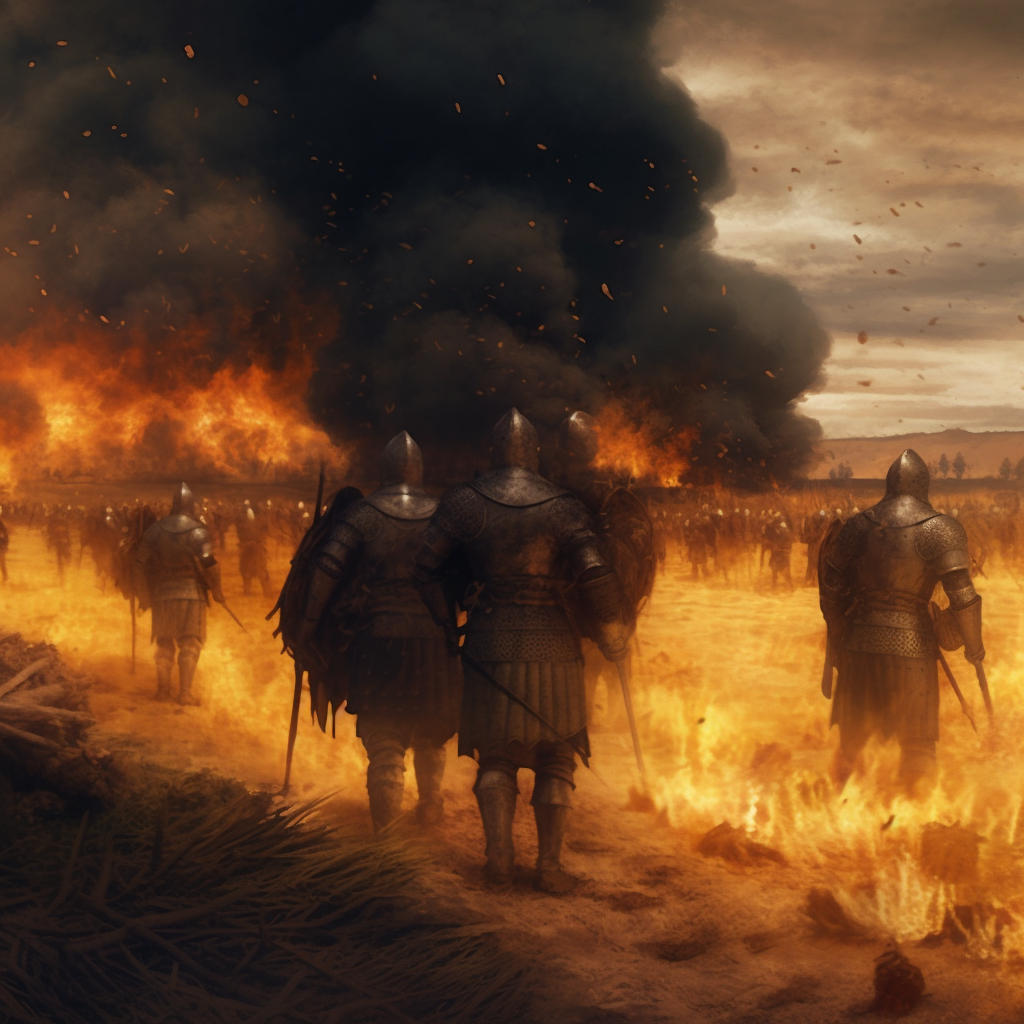 315 B.E.
315 B.E.The Razing of Astania, Birth of Eldurgrund
Disaster / DestructionThe razing of Astania after a long period of sieging. This resulted in the complete destruction of the city and her territories.
-
624 B.E.
Death of Tut Maut
Life, Death -
614 B.E.
Death of Can En
Life, Death -
448 HI
Forced Retreat of the New Constructs
Military actionThe push of the constructs beyond the mainland of Silse and onto Silse's Cendre and Veiel Ard Besme.
Species
Elves -
450 HI
Collapse of the Western Syndicate
Political event -
450 HI
16 Naiber
The Feneyl Rebellion
Founding -
450 HI
16 Naiber
"The Man from Nowhere" visits Uliyo
Life, Supernatural -
451 HI
15 Taober
The Last Meeting of the Three Elf Kings
Diplomatic actionThe meeting between the leaders of the Western, Southern, and Eastern Elf kingdoms in which they all stated their nonaggression to each other for the foreseeable future. This would be the first and only formal meeting between the kings of the great Elvish Kingdoms at the same time.
Species
Elves -
454 HI
29 Ailber
Uliyo Orders the Construction of Ilobel, Movement on Veiel Ard Besme
Construction beginning/endThe declaration by Uliyo Feneyl and his personal council to build the city of Ilobel.
-
457 HI
6 Taober520 HI
-2 Feimber
Vestergil Takes Flight
Religious event -
460 HI
480 HI
Rise of Western Elf Nationalism
Cultural eventThe rise of Western Elf nationalism, exceptionalism, and isolation. This would shape much of how the Western Elves view themselves today.
Species
Elves -
588 B.E. - 578 B.E.
First Kala/Roja Migration
Population Migration / TravelSpecies
J'barri -
469 HI
475 HI
Western Elves Attack Veiel Ard Besme
Military actionThe beginning of the total destruction of the Silse constructs. During this period, the Elves would come to discover the waning rocks, meet the moonfolk, and complete their goal of killing the constructs.
-
471 HI
19 Silber
Western Elves meet the Moonfolk
Cultural eventThe first meeting between the Elves and the strange, cave-dwelling "Moonfolk" that would eventually leave Veiel Ard Besme before falling into obscurity.
Species
Elves -
485 HI
Completion of Ilobel
Construction beginning/endThe completed construction of Ilobel by the J'barri slaves. Most of the slaves would die in the process, though their work is considered foundational to the modern engineering of the city.
-
492 HI
29 Silber
Death of Uliyo Feneyl
Life, DeathThe death of Uliyo Feneyl which would cast a dark shadow on the kingdom. He would be replaced by his son, Levrin Feneyl.
-
488 B.E.
The Battle of Tirni
Military: BattleThe first battle in Levrin Feneyl's escapade of superiority and ownership over the people of Renad.
-
488 B.E.
Western Elves' Failed Siege of Kala
Military: Battle -
511 HI
15 Taober511 HI
17 Mitember
The Hurricane of Ilobel
Geological / environmental eventThe long period of destruction and damage in Ilobel brought on by unrelenting storms.
-
512 HI
530 HI
Dour and Levrin Begin Construction of the Waning Keep
Construction beginning/endThe full construction of the Waning Keep, which still stands undestroyed to this day.
-
520 HI
15 Taober
Vestergil Goes to the Snow Rock Isles
Political eventThe arrival of Vestergil to the Snow Rock Isles at the end of his long flight, he would come to temporarily take the Isles.
Location
Snow Rock IslesSpecies
Humans -
520 HI
Mitember595 HI
Construction of the Gates of Vast
Construction beginning/endLocation
Gates of VastSpecies
Humans -
525 HI
630 HI
The Waning Rock Revolution
Scientific achievementA period of increased usage of Waning Rocks by the people of the Western Elvish Kingdom.
-
545 HI
9 Taober550 HI
18 Naiber
Eldurgrund Advances into the Marsh
Political eventThe advancement of platoons from Eldurgrund into the Marsh after the discovery of easily accessible gold and iron in the region.
Species
Tara-Jhen -
550 HI
12 Chaiber550 HI
23 Huerember
The War of the Mountains
Military: WarThe series of battles between the Naga-Tel/Tara-Jhen and the humans of the mountain towns.
Species
Humans -
551 HI
9 Feimber
Local Naga-Tel privately declare Tara-Jhen as enemies
Diplomatic actionThe declaration of the northern Naga-Tel that the Tara-Jhen had goals that opposed their own.
Species
Naga-Tel -
571 HI
9 Mitember
The Tara-Jhen support the eviction of snakefolk from Jerborg and Gullivegur
Political eventThe increase of tensions between the snake and lizardfolk as a result of casting the Naga-Tel from the mining and trade towns in the mountains.
Species
Naga-Tel -
571 HI
20 Aeber571 HI
23 Orphember
Northern Naga-Tel Activists Release the Kaban Slaves of the Jerborg Mines
Disaster / DestructionThe attacks of the Naga-Tel and Kaban against the human outposts within the Jerborg mines.
Species
Naga-Tel -
581 HI
11 Chaiber
Southern Elvish Forces Discovered Smuggling Resources West
Criminal Activity -
595 HI
Mitember600 HI
Silber
Vhou Riyael Investigates Waning Keep's Infrastructure
Discovery, ScientificLocation
Waning KeepSpecies
Elves -
603 HI
30 Ailber
Vestergil Grants the Snow Rocks Storm Magic
Celestial / CosmicLocation
Snow Rock IslesSpecies
Humans -
635 HI
Death of Levrin Feneyl
Life, DeathLocation
Waning KeepSpecies
Elves -
636 HI
Eyiliv Feneyl Learns of Southern Elf Spying
Political event -
640 HI
649 HI
Vhou Riyael Unites the Independent Cities of Nim
Diplomatic actionThe first full fledged attempt to unite eastern Silse due to fear of the western elves.
Location
Continent: SilseSpecies
Elves -
645 HI
10 Silber
Kadelkonatl Calls to the Kaban
Religious event -
647 HI
15 Ailber653 HI
1 Naiber
King Eyiliv Feneyl Seeks Allies Against Nim
Diplomatic actionThe alliance between the Western Elves and the Naga-Tel broods of Mot D'nir and any Fire Mage Fleets they could find.
Species
Elves -
653 HI
12 Chaiber
Eyiliv Seeks Alliance with Southern Elves, East Warned
Diplomatic actionThe meeting between Eyiliv Feneyl and Paele Haerehel, and the subsequent warning given to Vhou by Paele.
Species
Elves -
653 HI
25 Ailber
Caripreet Declines Vhou's Alliance
Diplomatic action -
654 HI
15 Feimber
Kadelkonatl Awakens, First Appearance of the Marsh Orcs
Disaster / DestructionThe first appearance of the new Kaban elder, Kanelkonatl, and a new species of Laminarum known as "Marsh Orcs."
Location
Krakan BowerSpecies
Kaban -
654 HI
20 Taober654 HI
9 Orphember
Kadelkonatl Travels the Marsh
RevolutionThe migration of Kadelkonatl around the marsh, inspiring revolution from the Kaban and spreading the Marsh Orc population.
-
655 HI
8 Silber655 HI
14 Orphember
The Naga-Tel Broodmothers Approach the Kaban
Diplomatic action -
656 HI
14 Mitember657 HI
10 Orphember
Human Settlements Pledge Support to the Eastern Elves
Diplomatic actionThe pledging of support to the Eastern Elves by Fjordstrond, Shellbay, Jerborg, and consideration by the Snow-Rock Isles.
-
657 HI
14 Huerember
Eyiliv Learns of Human Alliances
Political event -
658 HI
13 Feimber
Dour Visits the Broodmothers, Alliance formed
Diplomatic action -
192 B.E.
The Convocation of Four
Gathering / ConferenceThe joining of Four major powers with promises of fulfilling each other's interests and protecting one another as the paranoia of war was reaching its peak.
-
30/04/192 B.E.
Vhou Riyael Calls Emergency Meeting with Allies
Gathering / ConferenceThe meeting in which Vhou discussed the alliance of the Western Pillars, and that everyone should be ready for war.
Location
Newmot -
659 HI
15 Naiber
Saltkrigere Attempt Assasination of Eyiliv
Life, Failure / MishapThe failed attempt on Eyiliv Feneyl by a Saltkrigere spy during his stay in Caripreet. The failure would be the smoking gun of the The War of Eyiliv, which would carry the greatest death toll of any conflict in Laminarum's history, even compared to the Mountainfold.
Location
Caripreet -
190B.E. - 110 B.E.
The War of Eyiliv
Military: WarThe disastrous war saw the greatest death toll of any conflict to date. Now seen as an unfortunate event that could have been avoided, it appears to have occurred for little reason at all. Paranoia and avaricious desire saw races of man, elves, and even divine beings throw their hats into the ring of fire. It is attributed to Eyiliv and resulted in the great Western Elf stigma today, but they were hardly the only ones to blame. The war saw the extinction of the Ocean Pride once and for all, the abandoning of humans by Vestergil, the "death" of Kadelkonatl, the diaspora of Marsh Orcs, the returning of the Quai to the Tara-Jhen, the betrayal of Gullivegur and Caripreet, and the push to the isolation of the Western Elves. When the war ended, the Kaban returned to brutal subjugation under the Tara-Jhen and the Naga-Tel grew estranged for their actions against the Tara-Jhen. Religion and tradition would become more reinforced by humans, as they saw Milin Orphi as the cause behind the madness.
For a more detailed look at the war, explore its timeline:
Ettermiddag
700 1000
Ettermiddag is an era defined by its hardships and struggle for survival. Disease ravaged both Silse and Trinen, the growth of the fascist Tara-Jhen government known as the "Kraken Mur," the worship of devils became a massive movement, and the seeds of Renad's economic downfall were sewed. During this era, as much as 90% of the global population fell to war, starvation, and disease. However, its also defined by preparation and the ability to fight against those forces. Eldurgrund forged the order of the Eldur Knights, Shellbay formed an order of Ofjuren Paladins, Nim managed to unite all of Tsaoin, and the threat of the Western Elves went silent.
-
 701 EG
701 EG
14 Taober
The Starfall Rupture
Disaster / DestructionLocation
Eldurgrund -
701 EG
4 Mitember
Disaster claims Trinen
Disaster / DestructionThe collapse of humanity's control over territory as a result of the Starfall Rupture.
Species
Humans -
106 B.E.
Disaster Reaches Tsaoin, Mot D'nir, and Renad
Disaster / DestructionThe winters as a result of Verivem's Comet reaching the nearest countries to Trinen.
-
703 EG
Naiber730 EG
Naiber
Warlords Gain Trinen Territory
FoundingThe movement of Warlords across Trinen's lands, conquering towns and establishing new territories.
-
705 EG
Formation of the Cult of Verivem
FoundingThe creation of the Cult of Verivem, which resided in the destroyed forest that the comet first crashed in.
-
707 EG
Eisol's Wrath Strikes the Backhand, Mot D'nir
Disaster / DestructionThe striking of a great tidal wave, later named "Eisol's Wrath," on the Backhand and Mot D'nir, which greatly changed the geography of both regions.
Location
Continent: Silse -
68 B.E.
The Plea Paranoia
Cultural eventThe Paranoia resulting from Esha's Crusade Plea, dragging Kala into a dark age of fascism and martial law for years to come.
Species
J'barri -
44 B.E.
Ineva Kataqr Siezes Kalan Government
Civil actionThe takeover of the Council of Kala by Ineva Kataqr, who strived to douse the flames of the Plea Paranoia.
-
754 EG
The Eruption of Renad-pai
Disaster / DestructionThe long-awaited and only recorded eruption of Renad-pai. While its physical effects paled in comparison to that of Taktaalak, its social and economic impacts are still felt today, even as it happened in a time of Renadi isolation.
Location
Renad-Pai -
760 EG
10 Naiber
Formation of the Eldur Knights
FoundingThe formation of the elite organization of knights by the government of Eldurgrund, which still exists today (in an honorary capacity).
Species
Humans -
761 EG
Formation of the Saltkrigere Paladins
FoundingThe formation of an elite force of paladins (entirely independent of the Eldur Knights) by Shellbay in order to defend from the rising Snowhammer threat.
Species
Humans -
761 EG
Mitember764 EG
Orphember
War of the Corkend Coast
Military: WarThe war between the Shellbay Paladins and the Shuckers over the territory of the Corkend Peninsula.
Species
Humans -
775 EG
The Bloodrain of Nim
Religious eventThe event in which black rain fell upon Nim, turning its rivers black. While it was unknown at the time, this is believed to signal the arrival of the Ohdaufehl in Laminarum.
-
775 EG
Mitember
The Empyrean Cascade
Celestial / Cosmic -
775 EG
Huerember778 EG
Orphember
Epithet, Eldurgrund slay the Cult of Verivem
Military: WarThe alliance between Epithet and Eldurgrund that saw the near total destruction of the Cult of Verivem.
Location
EldurgrundSpecies
Humans -
776 EG
Taober
Onothis, Eshiren take root in Silse
Cultural eventThe landing of Onothis, the Mountain and Eshiren, the Waterblight in the lands of Silse to provide assistance for the Elves.
-
792 EG
Death of Ineva Kataqr, Council of Kala reforms
FoundingThe reformation of the Council of Kala following the death of Ineva Kataqr. The council would be formed from her children, based on financial inheritance.
-
797 EG
Fall of Epithet
Celestial / CosmicThe fall of epithet from Ohdaufehl to Aufalten. The direct cause of his fall is unknown, but it reached its pinnacle in his abandonment of Euvurcrest, the city that he had built.
-
798 EG
Milin Orphi Calls for Snowhammer Domination
Religious eventLocation
EldurgrundSpecies
Humans -
798 EG
Mitember
Vestergil Summons the Icelend Dwarves
Gathering / ConferenceThe summoning of the Icelend Dwarves by Vestergil. While they were intended to assist the good people of Trinen against the new plight of Milin Orphi and Epithet, many of them betrayed their new cause to join the raiders.
Location
IcelendsSpecies
Icelend Dwarves -
 799 EG
799 EG
War of Storms and Wings
Military: WarThe war waged by Epithet, the Fleet and the The Ettermiddag Raider Factions against Eldurgrund and the Icelend Dwarves.
Location
EldurgrundSpecies
Humans -
815 EG
Erengil Arrives in Mot D'nir
Celestial / CosmicThe Arrival of Erengel, the Light (to become Erengel, the Darklight) in Mot D'nir, in order to help guide and protect the remaining population of Mot D'nir, and to help them spread their reach once more.
-
819 EG
Roja Begins Reclamation of Renad-Pai
Construction beginning/endThe first attempt of Roja to reclaim the buried Renad-Pai. While efforts were troublesome and slow, the land would eventually be uncovered thanks to the help of Ghattadon, the Gentle.
-
825 EG
Mulatar gathers the Nukin
Celestial / CosmicThe arrival of Mulatar, the Spring in Silse. His goal was to gather the dwindling Nukin people and provide a community to ensure their survival, within the forests under the kingdom of Bourilia.
Species
Nukin -
840 EG
Ghattadon arrives in Renad
Celestial / CosmicThe arrival of Ghattadon, the Gentle in Renad. While his intention was to rekindle the flame of J'barri pride that had mostly been lost throughout their history, he would spend most of his time ensuring that their civilization could continue existing at all.
-
870 EG
Fall of Ghattadon
Celestial / CosmicThe fall of Ghattadon after he abandoned the J'barri people. While he initially desired to bring about a new age of glory and life for the three cities, he spent thirty years realizing that they were set in their ways. He lost his patience, taking to see the world rather than help it.
-
885 EG
Fall of Erengel
Celestial / CosmicThe fall of Erengel, the Darklight from unknown causes. While he once guided individuals through Mot D'nir and the Orphi Gap and waded away the monsters within them, he would now draw people away from their destination and his light brought on corruption from beneath the waters.
-
886 EG
Eruption of Taktaalak
Disaster / DestructionThe Eruption of Taktaalak, the central volcano of Kazbur that resulted in the continent splitting, as well as the uncovering of an underground sea.
-
890 EG
First Sighting of the Gnomes
Discovery, ExplorationThe first sighting of the gnomes in Silse, after Vhou Riyael attempted to build a port village in the newly risen Britmail Forest.
-
900 EG
Monstrosities Birthed in Eldurgrund
Scientific achievementThe first legends of minotaurs, centaurs, and satyrs appear. While many believe that the Astanias had a hand in cruel breeding rituals, it is here that the general populace believes that the Threadweaver Family performed evil witchcraft, to make them a permanent disease in Laminarum.
Location
Eldurgrund -
910 EG
Fall of Eshiren, Gnome Diaspora
Celestial / CosmicThe unfortunate fall of Eshiren, the Waterblight, for unknown reasons. She would go on to nearly destroy the coastal towns of Silse by leaving a viscous poison in their waters. With their food poisoned and land tainted, the elves retreated and the gnomes fled in all directions.
-
915 EG
Gnomes Find Mulatar
Discovery, ExplorationThe merging of the nukin tribes with the roaming gnomes, after years of traveling to find a new home.
-
925 EG
The Dragon Covens Emerge
Celestial / CosmicThe first appearance of dragonborn in Laminarum, as created by Ghattadon, the Gentle and Epithet, the Fleet in preparation for a coming war.
-
928 EG
929 EG
Coven of Ghattadon Travels to Fjordstrond
Discovery, ExplorationThe movement of Ghattadons Coven into Fjordstrond, hoping to find Vestergil for unknown purposes.
-
929 EG
Coven of Ghattadon Ambushed by Coven of Epithet
Military: Battle -
935 EG
Southern Elves March on Mulatar
Military actionThe Southern Elves make an attempt on Mulatar's life, under the new allegiance to Fíkn Catar.
-
943 EG
Silber957 EG
Orphember
Eldur Knights Unite Eldurgrund
Political eventLocation
EldurgrundSpecies
Humans -
951 EG
968 EG
Caripreet Territory Expansion
Founding -
959 EG
Orcs begin to gather, take Northlend Territory
Cultural eventThe gathering of the Marsh Orcs in a larger community that would settle in the Northlends. Their territory would not be legitimized for centuries to come but the orcs would make their borders known to any that crossed within.
-
962 EG
968 EG
Shellbay Establishes the Bailum Consilium
Political eventThe formation of an organization known as the Bailum Consilium, which sought to ensure that the ideals of the Shellbay Barony could be the homogenous, unalienable beliefs of any land under their territory.
-
968 EG
969 EG
The Fester Treachery, Dark Elves Occupy Morie You
Military actionThe horrific tragedy and mass killing within the major urban and rural centers of Bourilia, forcing several royals to flee and hide within Fort Haerehel throughout a siege.
-
970 EG
Fort Feneyl and Haerehel Reclaim Morie You
Military actionThe reclamation of Morie You by the soldiers of Fort Haerehel and the valiant allies at Fort Feneyl.
Location
Morie You -
970 EG
1000 EG
Daybreak Revival
Cultural eventThis 30 year period served as the closing of Ettermiddag. After centuries of pain and suffering, the world finally began to recover. Drastic weather events concluded, plague and famine receded, and the raiders were forced into the Icelends. The elves managed to get a grip on their economy while reaching back out to Renad for trade. Global temperatures began to slowly rise and the fallen Ohdaufehl and Aufalten began to fade into history.
-
995 EG
Kala Reconnects with Poueir
Financial EventIn the face of the daybreak revival and a decrease in disease, extreme weather phenomena, and social unrest, Kala would reconnect with its elvish cousins across the sea.
Daggry
1001 1200
Daggry was a period that bore the fruits of the Daybreak Revival. The population of Laminarum began to climb once more as the world was plunged into a new era of unbound discovery and science. Humanity would be the only group to miss out on most of this development, as they turned their attention to the new promises of empire.
-
1004 DY
24 Silber
Shellbay and Fjordstrond Unite
Political eventThe one-sided merging between Shellbay and Fjordstrond beneath one banner. The Saltkrigere would grow its ranks and spread between both cities, protecting both but ultimately remaining loyal to their ancestors.
-
 1010 DY
1010 DY
6 Silber
Formation of the Monadnock Symposium
FoundingThe formation of the Elvish Monadnock Symposium: an organization dedicated to the discussion of spiritual, scientific, political, and social topics. With members ranging from east to west, their annual semi-annual formal meetings were held at a lodging under a single mountain between Mailes and Ghei Wyl.
-
1032 DY
Discovery of Urrfolk, Hunting Begins
Discovery, ExplorationThe discovery of the Urrfolk on the island within the Fingerless Gulf. The humans that lived off the coast would quickly establish a hunting lodge intended for "big game hunting."
-
1052 DY
Members of Kalan Council Raise Private Militaries
Political event -
1067 DY
15 Mitember1067 DY
2 Huerember
Dwarves migrate to the mountains of Bourilia
Population Migration / TravelThe migration of several dwarf clans to the mountains of Bourilia, where they would be ousted shortly after.
-
1076 DY
Urr Infestation of Mainland
Disaster / Destruction -
1090 DY
Kala and Caripreet Open Trade Dealings
Diplomatic actionThe short-lived trade deals between Caripreet and Kala, which would be cut short by the eventual occupation by Eldurgrund.
Location
Kala -
1092 DY
Orphember1093 DY
Taober
Caripreet Defends Jerborg
Military actionThe successful defense of Jerborg by Caripreet against Eldurgrund when the latter attempted to repossess their old colony.
-
1092 DY
12 Orphember
Urale offers peace and protection treaty with Bourilia, Nim
Political eventThe rejected offer from the Waning Keep to unite with Bourilia and the River Kingdom of Nim in order to defend from potential threats abroad.
-
 1093 DY
1093 DY
Mitember1094 DY
Feimber
Euvurcrest 1st Battalion Takes Nadlewood strip, Partners with Gnomes
Military actionThe march of Euvurcrest troops through the Nadlewood Strip in their journey to Caripreet.
-
1094 DY
Taober1102 DY
Huerember
Urr Island Investigation
Discovery, ScientificThe Eldurstery investigation into the inhabitants of Urr Island, wishing to prove the sapience of the natives.
-
1094 DY
Taober1094 DY
Huerember
Eldurgrund takes Caripreet, Installs new Council
Military action -
1099 DY
Chaiber1101 DY
Taober
Lord's Rebellion
Military actionLocation
Caripreet -
1105 DY
Kalan Civil War
Military: WarThe outbreak of war in the merchant nation of Kala, which was ironically waged over disputes of trade and the overuse of military force.
-
1112 DY
29 Silber
Dark Elves Banned From Urale
Political eventThe formal banning and removal of dark elves across the Kingdom of Urale at the order of Ulitol Feneyl.
-
1137 DY
1165 DY
Decline of the Monadnock Symposium
DisbandmentThe gradual decline of the Monadnock Symposium thanks to tensions brought on by the western elves. Due to a combination of racial complexities, refusal to relocate the location of the meetings, and refusal to allow aid for those who could not arrive, the organization would fall into obscurity.
-
1152 DY
Silber1153 DY
Naiber
The Fear
Cultural eventThe Fear was a phenomenon identified mostly in the lower class of Fjordstrond and Eldurgrund as the mainland Urrfolk began to encroach on human territory.
-
1169 DY
First meeting of the Ourithanur Collective
Gathering / ConferenceThe first meeting of the Ourithanur Collective, which formed from the refuse of and fringe fragments of the Monadnock Symposium. Their creation would launch the national recognition of eugenics as a tragedy in the River Kingdom of Nim.
-
 1172 DY
1172 DY
Mitember1199 DY
Ailber
The Rembrandtic Wars
Military: WarThe Rembrandtic Wars (named for the Saltkrigere General at the time) were a three wave conflict between the young Eldurgrund and Saltkrigere Empires. The conflict drew upon citizens in every corner of Trinen as both sides prepared for a war of unstoppable forces. Leaders of every major city turned to plans that prior generations had thought inconceivable (such as enlisting Urrfolk in the military) in hopes of proving their worth and turning the tides. As ideas bent from creative to dangerous, the conflict became a war between past mistakes and self destruction. Aside from notable instances of self sabotage, the war was won by strategy and numbers. While the Eldur Knights outnumbered the Saltkrigere Paladins by a factor of 5, it was the number of skilled soldiers that turned the tides in Shellbay's favor. The three decades saw the seeds of the modern day Augury planted, but before it could rise, the new Saltkrigere Empire would have to fall. To read more on the Rembrandtic Wars, use the following link:
-
1178 DY
Kala Offers Aid to Eldurgrund Empire
Political eventThe offer of aid to the Eldurgrund Empire from the Oligarchy of Kala: a surprising decision, given historical conflicts.
-
1183 DY
Vhou Provides Reparations to Dark Elves, Creates Edict of Silse
Cultural eventThe long overdue reparations given to the Dark Elves by Vhou Riyael. Along with these reparations, Vhou would create the Edict of Silse, the first official document amongst the elves that stated the rights guaranteed to every citizen of Nim. Further, it would discuss the rights guaranteed to outsiders that lacked formal citizenship.
-
1192 DY
Feimber1200 DY
Aeber
Urrfolk Emancipation
Cultural eventThe declaration of Shellbay to outlaw the hunting of any Urrfolk that assisted them in the war against Eldurgrund.
Huomen
1201 1478
-
1217 HN
Ghei Wyl Forms Confederacy Symposia
Political event -
1223 HN
Naiber
Death of Emperor Henri Leopold II
Life, Death -
1248 HN
Roja Begins Domestication of the Elephant Bird
Scientific achievementThe domestication of the 9-11ft tall Elephant Birds of Renad, marking the first recorded and intentional domestication effort in Renadi history.
-
1259 HN
Bourilia Opens Trade with Caripreet
Political eventThe first formal trade agreement between the elves and humans after Ettermiddag, following an unprecedented population boom in Bourilia which resulted in the need of more financial avenues.
-
1261 HN
27 Aeber
Death of Emperor Fridrik Harald
Life, Death -
1271 HN
17 Chaiber
Death of Emperor Elias Rembrandt II
Life, Death -
1294 HN
Death of Emperor Johanna IV
Life, DeathThe death of Emperor Eshe Johanna Zahra Evasdotter as a result of opium overdose.
-
1299 HN
Kala Offers Financial Aid to Ghei Wyl and the Confederacy Symposia
Financial EventKala Offers financial aid to those who had abandoned the Monadnock Symposium, claiming that the devotion to democracy inspired J'barri of all backgrounds.
-
1302 HN
Nim Begins Outreach Efforts to Kala
Cultural eventThe attempt of Nim to reconnect with the J'barri of Kala after past conflict regarding the drastic actions of Ineva Kataqr.
Location
Kala -
1340 HN
Oligarchy of Kala Changes Basis of Pride Leaders
Political eventThe rise of a new Pride Leader over Kala, who would ascend on a hereditary basis, just as they had in the past. The decision was a controversial one, as the Oligarchy was only steps away from a democracy at the time. Regardless, the role would be relegated to one of foreign relations. Why they shifted to a hereditary ascension is unknown, with some arguing that it would help create a stronger Kalan identity.
-
1353 HN
Death of Emperor Abdul III
Life, DeathThe death of emperor Sahra Abdul III during his venture to Caripreet villages to explain his new wave of legislation. His traveling scribes state that his heart stopped from the stress of interaction with the rowdy and belligerent locals during his decade of travels.
-
1380 HN
11 Mitember
Death of Emperor Sahra Abdul IV
Life, DeathThe death of Emperor Sahra Abdul IV at the hands of starvation. Though caught in a nationwide famine at the time, his death would come form enlightened fasting, in hopes of understanding the "plight of the people."
-
1416 HN
Elthrata Arit: Kalan Artistic Revolution
Cultural eventThe broad sweeping artistic revolution in Renad which was natively called the "Elthrata Arit." This burst of creation in the realm was brought on by a burst of immigration from Poueiri El-folk, alongside a decrease in taxation in art markets.
-
1425 HN
18 Silber
Death of Emperor Warren Van Haals
Life, Death -
1457 HN
Vhou Offered Seat by Kalan Council
Political eventThe nationally recognized promotion of Vhou Riyael onto the Council of Kala, making him the only elf to hold a substantial political position within two separate nations.
-
1470 HN
20 Orphember
Death of Emperor Avernus Sandhar
Life, DeathThe death of Emperor Avernus "Köttur" Sandhar during an earthquake that toppled his throne room.
-
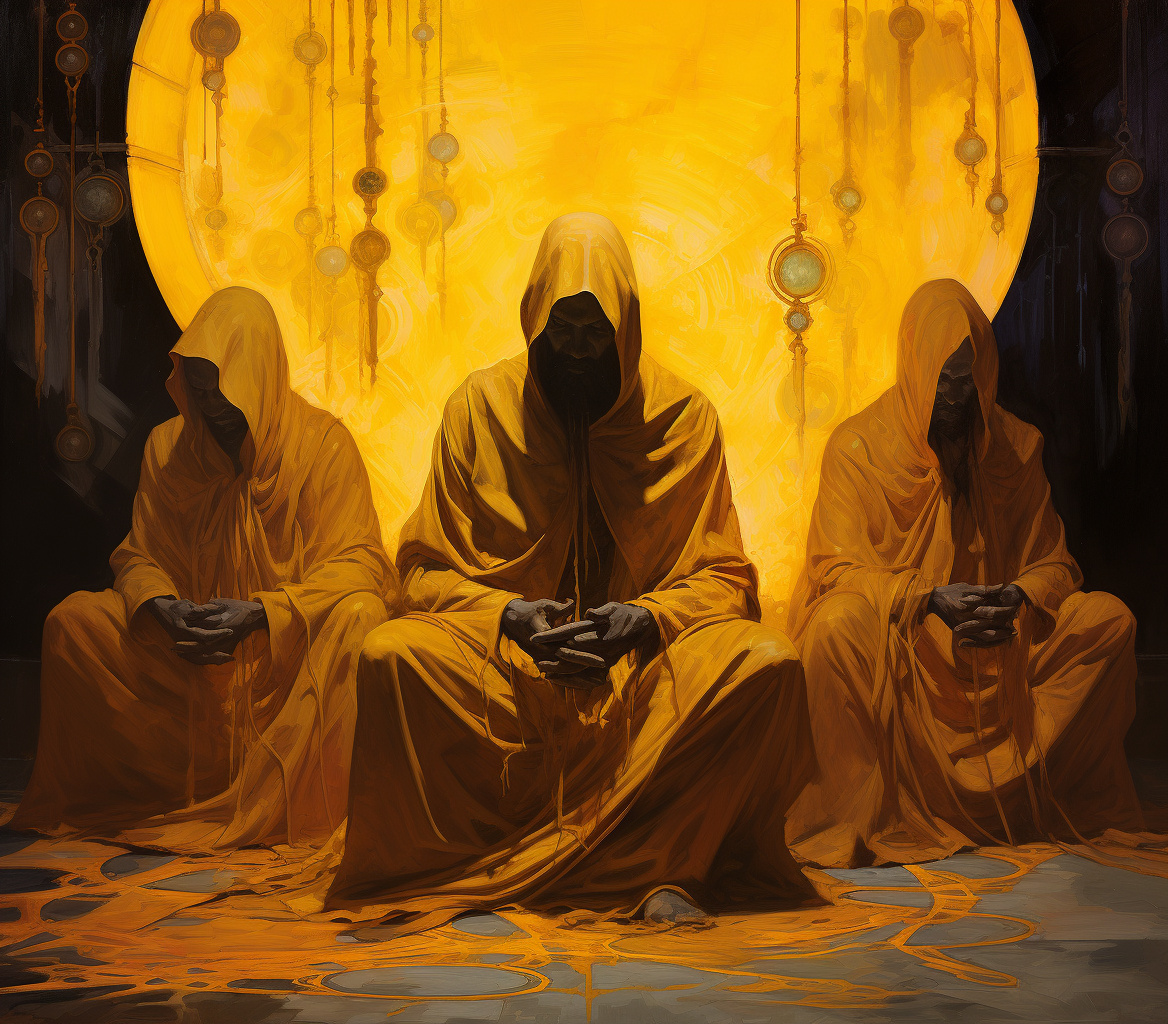 1470 HN
1470 HN
30 Orphember1478 HN
6 Silber
Rise of the Augury
Military: WarThe rise of the Augury would shape Laminarum until the modern era, where it still stands and acts as the authority over all of Trinen. The revolution against the Saltkrigere Empire would start small, instating new rulers into the government while assassinating anyone in the city that would disagree. Word would travel to Shellbay while Saint's Maar geared up with both Fjordstrond and Eldurgrund to topple the legendary Saltkrigere fleets and armies. Saint's Maar eventually won, though Eldurgrund would ultimately fold, given their already shaky relations to both sides of the war. the Bailum Consilium was forced back into the borders of their native barony and the castle would eventually be captured, though many Saltkrigere and influential politicians managed to escape to the Snow Rock Isles. The war was a massive success, and allowed the Augury to grow. Shellbay would see its owners shift to a moderate family that would support an equal empire as well as assist Saint's Maar with their own military. Relations would slowly begin mending over the years, allowing Shellbay to gain its status as a separatist state, with special exemptions to their religion, culture, and taxes. They would be allowed to maintain the Saltkrigere as well, given the organizations roots in history and culture. Eldurgrund would continue with the status it had gained under the Saltkrigere Empire, with their military being suppressed. However, with time, they were allowed to once more use the title of Eldur Knight, but only 8 could hold the position at once.
-
1472 HN
Ghei Wyl, Kala fund Saltkrigere War Efforts
Financial EventGhei Wyl and Kala fund Saltkrigere efforts in hopes of securing future safety from Caripreet and Eldurgrund.
Middagstid
1479 1793
-
1479 MD
15 Taober
The Instatement of the Augurs
Political eventThe official shift from the Saltkrigere Empire to the Augury, replacing the court with a senate, the council with consuls, and the emperor with 3 augurs.
-
1486 MD
28 Chaiber
Augurs Prevent Tragedy: Shellbay Revolt
Military actionThe infiltration of Shellbay by Augury military forces. Their stay in the city was presented under the guise of a survey mission until the three renegade families in question were slain (after sufficient evidence was found). The event would serve as proof of the powers the Augurs could wield, reinforcing the ruling family's devotion to their empire.
Species
Humans -
1512 MD
8 Ailber
Augury Investigates Vestergil
ExpeditionThe investigation of Vestergil by the Augury in order to determine if he was a threat to the new government. The investigation culminated in a conversation with the Ohdaufehl, which led to revelations regarding the Aufalten across the land.
-
1513 MD
23 Silber
Formation of the Griarvarsi
FoundingThe formation of the Griarvarsi, an organization built specifically for the purpose of hunting Aufalten.
-
1520 MD
1525 MD
20 Silber
The Griarstalk
Cultural eventThe beginning of the Augury's hunt for the Aufalten after years of training their new Griarvarsi, which ended in tragedy.
-
1536 MD
1548 MD
Urale Funds the Construction of Buoy
Construction beginning/endThe funding of the political nightmare settlement known as Buoy. While its early days promised increased naval capabilities for the kindgom, its rapid decline would create the pirate hub we know today.
-
1537 MD
22 Silber
Fjordstrond Reinvokes "Urrfolk" Protection
Political eventThe establishment of programs to "protect" exceptional Urr that assisted Fjordstrond with various labor-intensive tasks.
Location
FjordstrondSpecies
Humans -
1538 MD
Brille Opens Borders to Immigrants
The first time that Brille would open its walls to immigrants, though the window of opportunity would close only 4 years after opening. What compelled the nation to allow outsiders within its borders is unknown, though most were kept at quite a distance from the inner machination of the nation, as they became farmers and tradesmen outside of Tirni.
-
1554 MD
1738 MD
Augury Constructs the Saint Roads
Construction beginning/endThe construction of the Saint Roads, which connect Saint's Maar to surrounding points of import. The Augury would first build a road to Euvurcrest, followed by Fjordstrond, and lastly Gullivegur. The road to Caripreet would be a joint effort between Eldurgrund and Caripreet after it was eventually assimilated in later years.
-
1573 MD
Augury Removes Eldurgrund Military Ban, Allows Fire Magic Research
Political event -
1598 MD
1 Orphember
First Vision of The Silence
Celestial / Cosmic -
1600 MD
1 Feimber
The Ordination of Saints, Formalization of Augury Religion
Cultural eventThe official creation of the title of "Saint," which was awarded to individuals of past and present that had done great deeds in the name of humanity under the guidance of the Ohdaufeen. Perhaps more importantly, it was this year that saw the Augurs officialize Taopinism as the core religion of the Augury, including most of the religion as we see it today.
Location
Saint's MaarSpecies
Humans -
1605 MD
14 Taober1613 MD
8 Chaiber
Augury Assimilates Caripreet
Political eventThe assimilation of Caripreet into the Augury after it had claimed independence during the collapse of the Saltkrigere Empire.
-
1612 MD
Revolution in Urale
Military: WarUrale's civil war fought between Olitar and Nevityra Feneyl for the Waning Keep. The war would be pivotal in creating the modern political landscape of the west, pitting the kingdom against its dark past of Ulitolean ideals.
-
1631 MD
13 Mitember
Augury Allows Dwarves Citizenship, Funds Mining Operations
Political eventThe allowance of Icelend Dwarves to become citizens under the Augury, as well as the offer of financial opportunity in the mountains across the Trinen-Mot D'nir border.
-
1644 MD
Major Rojan Emigration
Population Migration / Travel -
1660 MD
24 Taober
Augury Attempts to Assimilate Gullivegur
Political event -
1678 MD
Nim and Augury Spy on Buoy
Military actionAfter the long rumored construction and abandonment of the artificial island known as Buoy, the Augury and Nim work together to deterine the validity of this structures presence and abandonment.
-
1680 MD
3 Chaiber
Augurs Prevent Tragedy: Plague Prevention
Life, DeathThe prevention of a great plague thanks to visions by the Augurs. They would send their Griarvarsi down to a farm, southwest of Saint's Maar. A sick man was slain on his farm, along with his potentially infected swine. The Augurs stated that the plague would have been akin to a modern Fish Egg Flu, with a similar death toll.
-
1698 MD
24 Mitember1706 MD
12 Naiber
The Augury Invades Gullivegur, Birth of Goldwalk
Military actionThe forceful takeover of Gullivegur by the Augury, years after they had slowed their campaign to investigate their visions regarding Mot D'nir. Having become overgrown by the marsh once more, the invasion took years longer than anticipated. Subterfuge would also play a role in the delay, perhaps costing more deaths in the process.
-
1711 MD
16 Naiber1711 MD
26 Naiber
Kaban Revolution in Goldwalk
Revolution -
1715 MD
Bourilia Bans Waning Rock
Political eventThe ban of Waning Rock by Bourilia after an increase in smuggling efforts. While criminal activity had been largely ignored before, the public health concerns brought on by Waning Rock would see a wave of reform in Morie You, though not within other settlements of the kingdom.
-
1734 MD
24 Taober1739 MD
30 Silber
Consul Assassination Attempt, Jadethorn Prison Construction
Construction beginning/end -
1751 MD
2 Naiber1758 MD
20 Feimber
Tinata Renovations of kala
Construction beginning/endThe complete restructuring of Kala's port and lower-class districts, allowing for quicker military mobilization and decreasing the veracity of revolutionary tactics.
-
1762 MD
Mitember1764 MD
15 Naiber
Jerborg Revolution, Birth of Augur's End
RevolutionThe revolution at Jerborg thrown by Ongar Stone-Grower that would serve to remove the domineering Duke and create the short lived settlement of Augur's End until its fall during the Silence.
-
1768 MD
Nim Widens Citizenship
Political eventNim opens its voluntary citizenship to all species of Laminarum, now including orcs, the reptilians and dwarves. While outsiders aside from the J'barri were feared for their potential to exploit the unique nature of Silse, the land had long proved itself resilient.
-
1772 MD
10 Orphember
Augury Formalizes Orc Territory in Eldurgrund
Political eventThe creation of the Greylend Pact to cease conflict between orcs, lords, and the barony of Eldurgrund. While the "independent" territory surrounding the orc settlement of Orovical still stands to this day, the preference for the orcs in this conflict would plant the seeds of the eventual revolt against the Augury in the years following the Silence.
Location
Eldurgrund -
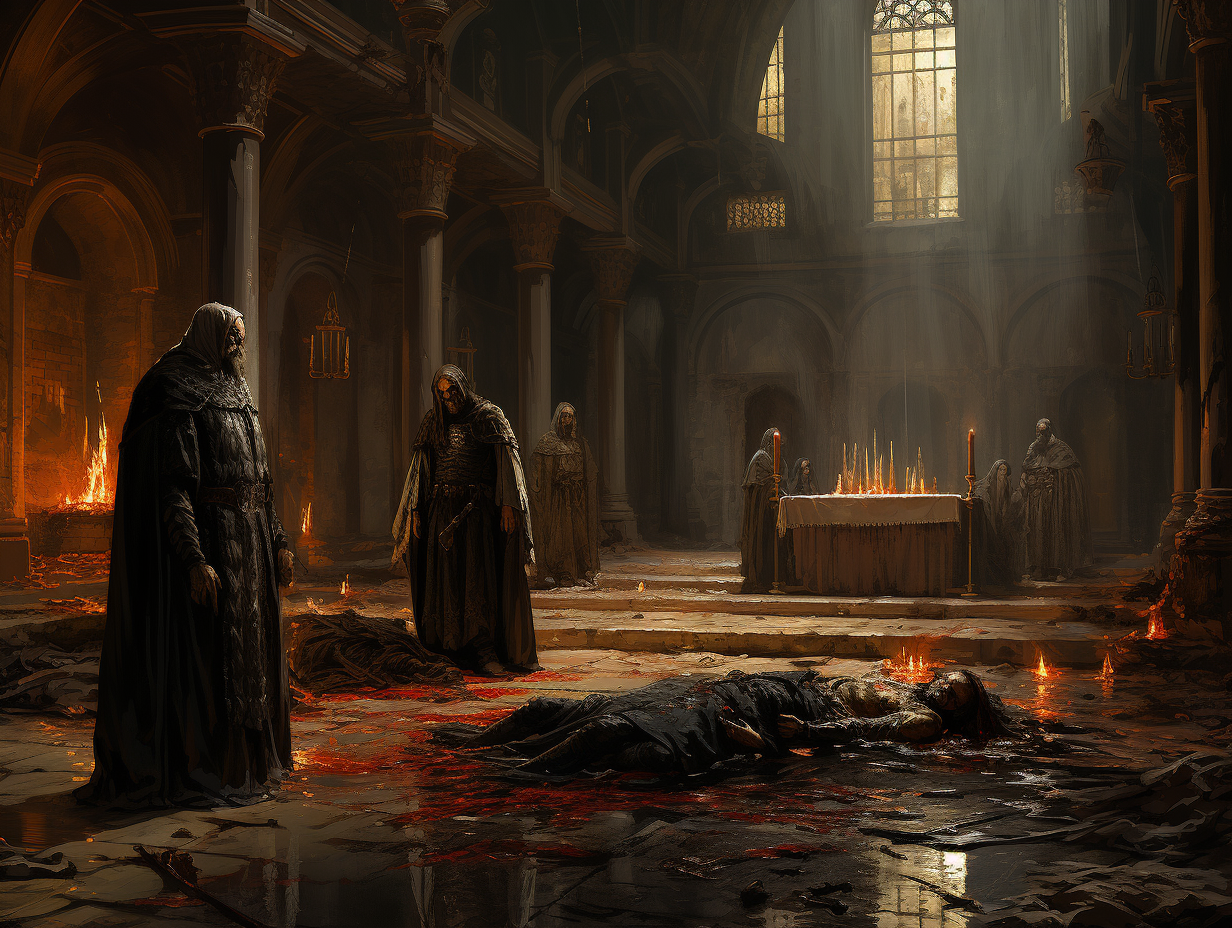 1791 MD
1791 MD
14 Chaiber1793 MD
Naiber
The Silence
Disaster / DestructionThe Silence is regarded as the most influential cultural crises with regard to the present day. The event would confirm the visions seen by the Augurs regarding the marsh, as Arniel Kane, an extant Thanid returned from his people's banishment to the southern oceans in order to reclaim what he believed was the birthright of his people. Sprung by the catastrophic assassination of all three Augurs by their own Griars, the following cascade saw the very foundations of the Augury shake. With only one consul remaining (after Krill's murder of the second), the senate began to claim that the empire would fall into the ways of the Saltkrigere Empire, with one emperor taking absolute control. Internal conflict would grow as they shut down all exports from Trinen and searched incoming activity. Internal strife meant that the government and military were weakened, with several revolts and attempts at supplementing leadership took place. Between the chaos, it was believed that the threat had come from the marsh, prompting the military to reach out to their territories and increasing control over Jadethorn, sending Nostula Turases to serve as warden after he volunteered. Among the chaos, a group often referred to as "the Company" found themselves forming within the marsh, as they managed to avoid extreme suspicion and criminal charges in Augur's End while also having no way to return home due to the border closures. Showing their capability to the city's head of guard, known as Caius Warrick, they would be utilized by Ongar Stone-Grower to investigate matters within the marsh regarding anomalies of the Quai. As the investigation took them to the prison of Jadethorn, a criminal entrepreneur by the name of Remr Taft, and a hermit's cabin in the woods, the conflict regarding the Quai and the Augury proved to be one in the same. Escalation saw the Tara-Jhen lose their connection to the Quai for the first time in a millennia, crippling the culture of Mot D'nir and the economy of Trinen. As matters only grew worse, Nostula Turases would use his resources and newfound trust to assimilate new regions of the marsh, using his nephew (and member of the company), Efan Turases, as a spearhead for this change. The other members fought against this pursuit while growing their own ties into Augur's End that still impacts Laminarum to this day (such as Sazhar's "Artificer Guild"). The conflict would culminate in the blackmail of Ongar Stone-Grower by Arniel and the perversion of the Quai, bringing a mass of land from the Realm of the Quai known as the "Composer" into Laminarum, spreading the Quai from beneath the floating object and turning any biological organism into an aberrant monster in its wake. The Composer was eventually lowered by the Company, resting in Taopin's well in order to reduce casualties. Due to his unfortunate circumstances, Ongar Stone Grower would be executed and replaced by Efan Turases. The city of Augur's End would become the city of Newmot, as the Augury returned to its goals of assimilating the marsh once more in order to prevent catastrophe in the future.
-
1792 MD
15 Mitember1792 MD
4 Orphember
The Kaban Achieve Freedom from Slavery
RevolutionThe Kaban's first fully successful revolution, freeing themselves from the Tara-Jhen and slavery for the first time since their arrival in the marsh, long before Ettermiddag.
Namiddag
1792 and beyond
Namiddag is the current era of Laminarum. After nearly a millennia of recovery from Ettermiddag and the new strike into Mot D'nir during the silence, the world try to find security in globalization, just as the legends prior to the dark ages had told. While these efforts would remain peaceful for many (and for all, for a short while), the motivations of empire would soon overtake these peaceful communications for humanity. After a time of struggle to take the marsh and Kazbur, as well as initial attempts to encroach on Silse, the Augury would eventually lessen its attempts at growth, seeking to strengthen the communities it had already gained, though much of the slowing only occurred due to the loss of the Augury's "golden age" frontiersmen. As the world has grown to seek peace and knowledge, international travel has seen a marked increase. Scholarly institutions are thriving more than ever and opportunity to seek whatever ends one may want have increased with the rise of guilds.
-
1792 NG
15 Mitember1792 NG
4 Orphember
The Kaban Achieve Freedom from Slavery
RevolutionThe Kaban's first fully successful revolution, freeing themselves from the Tara-Jhen and slavery for the first time since their arrival in the marsh, long before Ettermiddag.
-
1801 NG
15 Mitember1802 NG
10 Feimber
Eldurgrund Rebellion
Military: WarThe war waged by Eldurgrund in an attempt to sack Saint's Maar. While the attackers had powerful forces and even greater confidence, they would be forced back to their homeland where they were sieged by General Nostula Turases and his Saltkrigere forces.
-
1805 NG
23 Naiber
Kala Publicly Denounces Artificer's Guild, Bans Artificery
Cultural eventThe formal banning of Aritificery within Kala after the ancient art's revival at the hands of Sazhar's Articer Guild.
-
1807 NG
Poueir Declares Independence from Nim
Political eventPoueir declares independence from Nim, putting Vhou Riyael's anarchic philosophy to its first test.
-
 1813 NG
1813 NG
1842 NG
The Ghei Wyl Campaigns
Military: WarThe 3 separate campaigns waged by the Caripreet to take the east coast of Silse. All attempts would fail.
Location
Continent: SilseSpecies
Humans -
1828 NG
22 Silber
Kaban Gain Independence in Kazbur
Cultural eventThe formal recognition of Kaban independence by all of Mot D'nir and the Augury, along with a reparation program established in Saint's Maar.
Species
Kaban -
1898 NG
17 Taober
Collapse of the Islands Five
Political eventThe fall of the long-standing Islands Five which oversaw the Snow Rock Isles. The organization reached as far into history as when the islands were the only lands to cradle humanity. After disastrous famine, poor leadership, and refusal to adapt in the face of the Augury, the citizens of the isles decided it was time to bend or break.
Location
Snow Rock IslesSpecies
Humans -
1947 NG
27 Mitember
Falling Pride
Political event





















